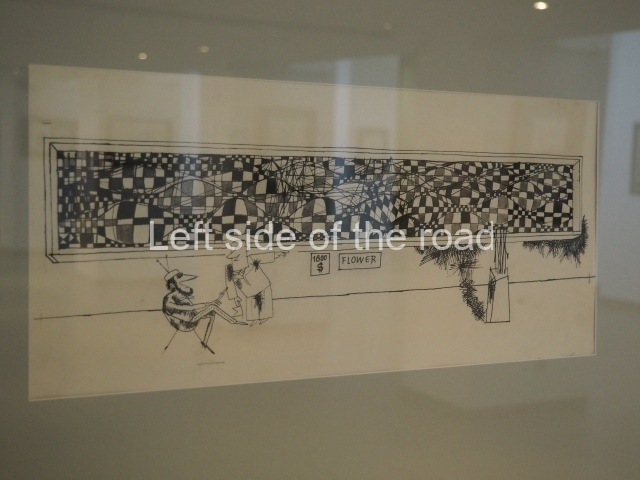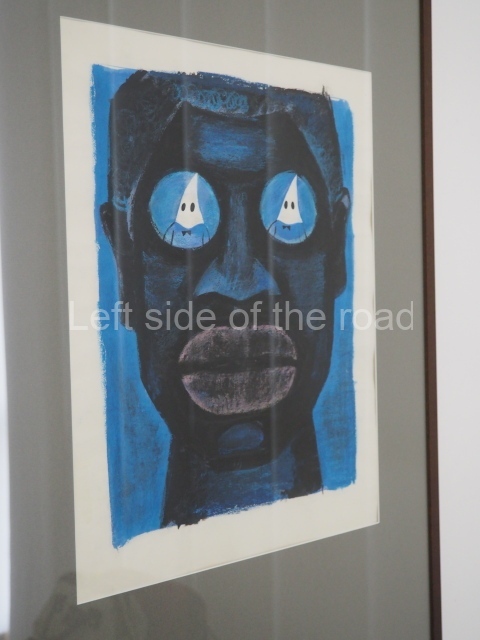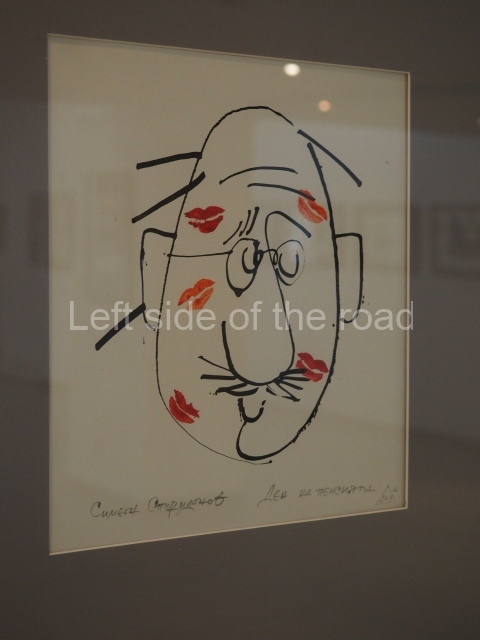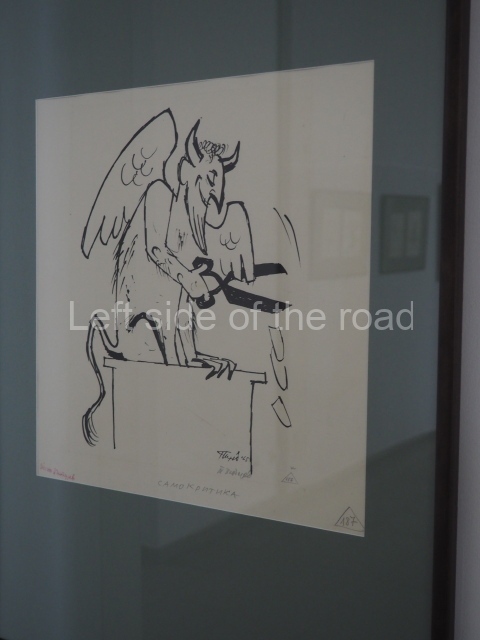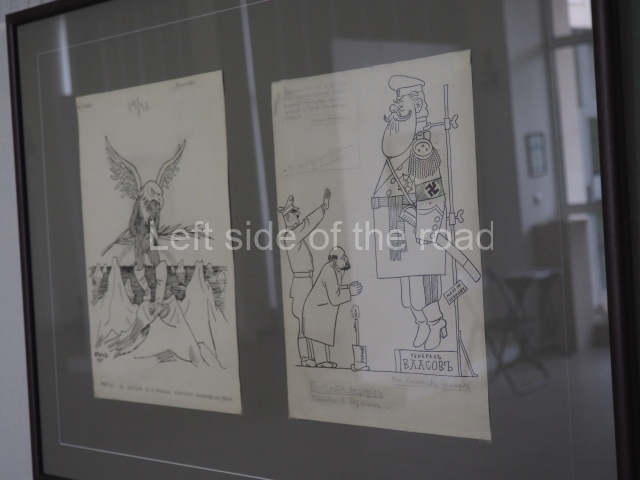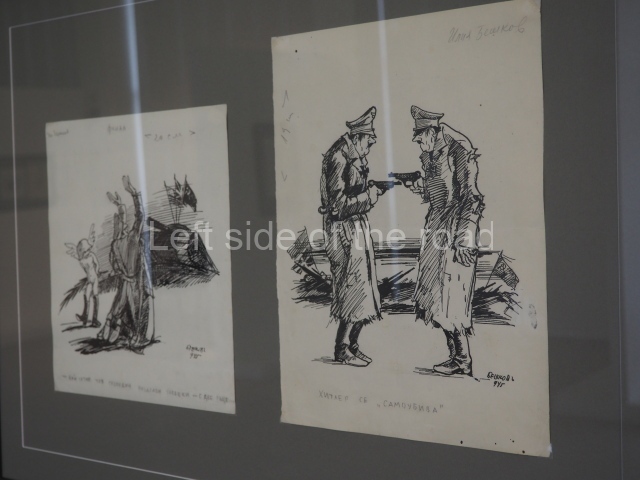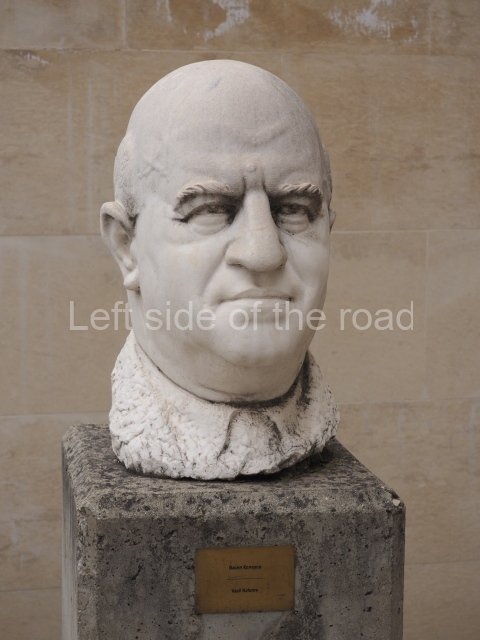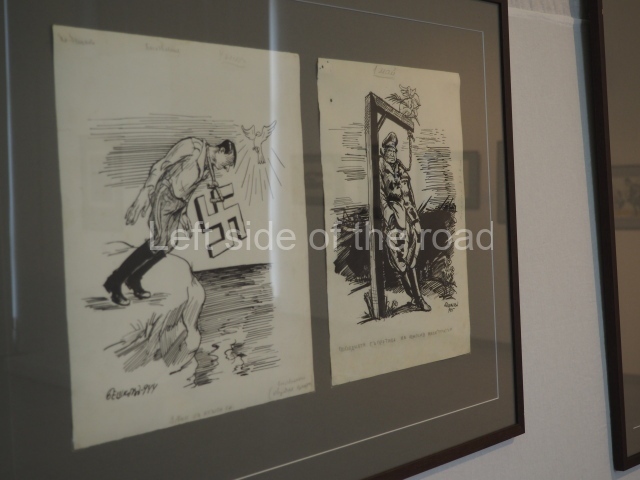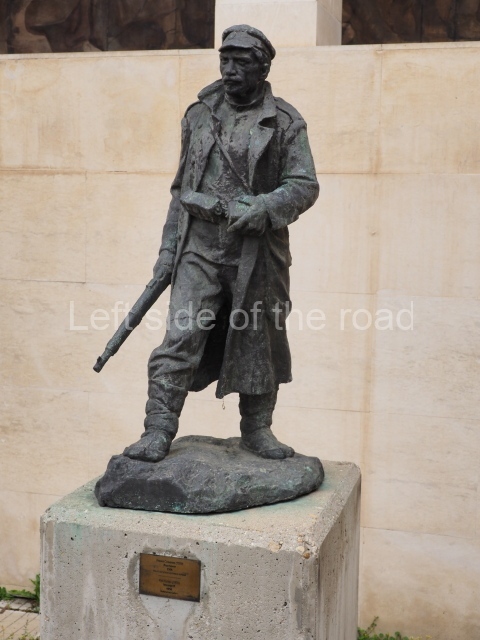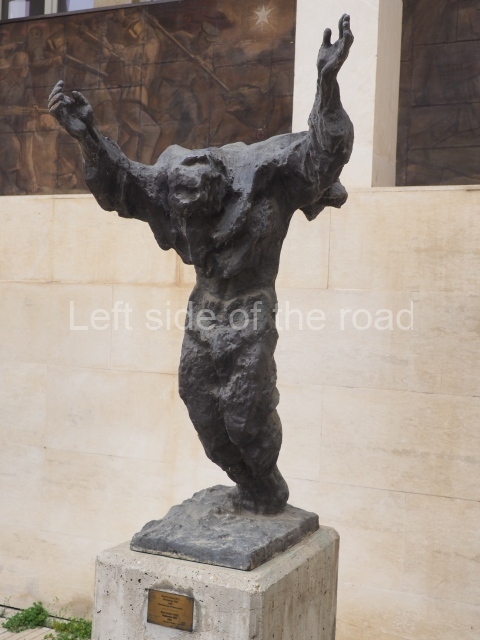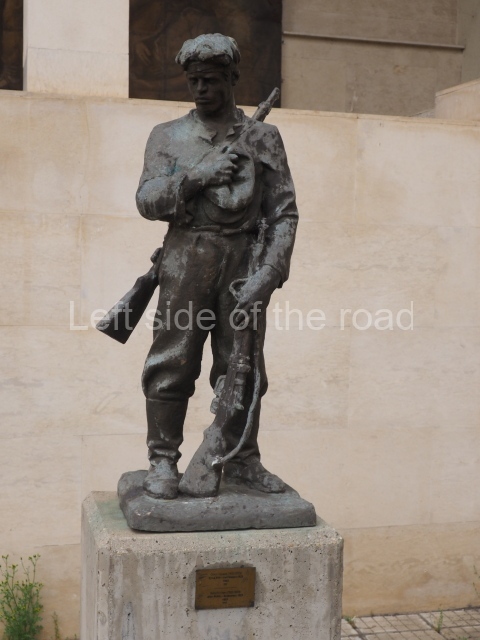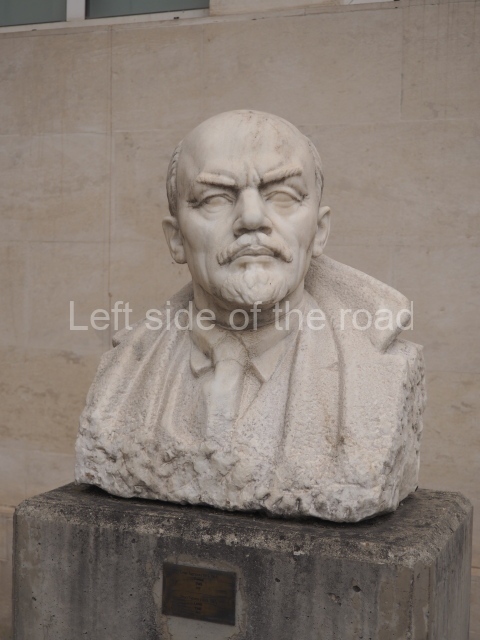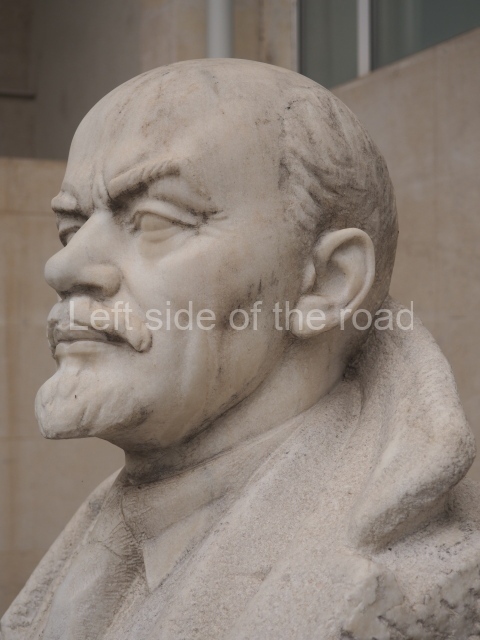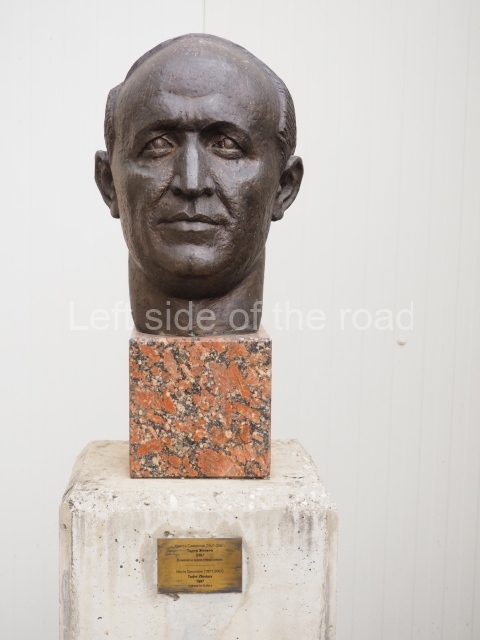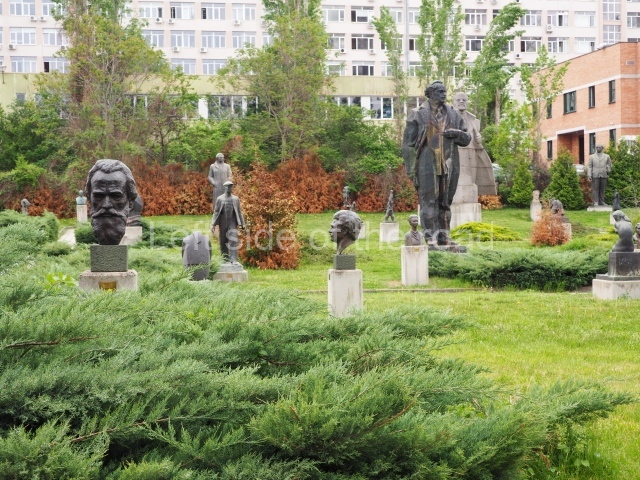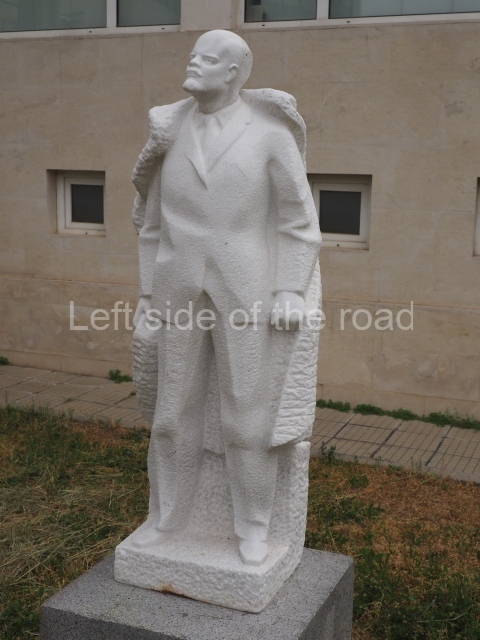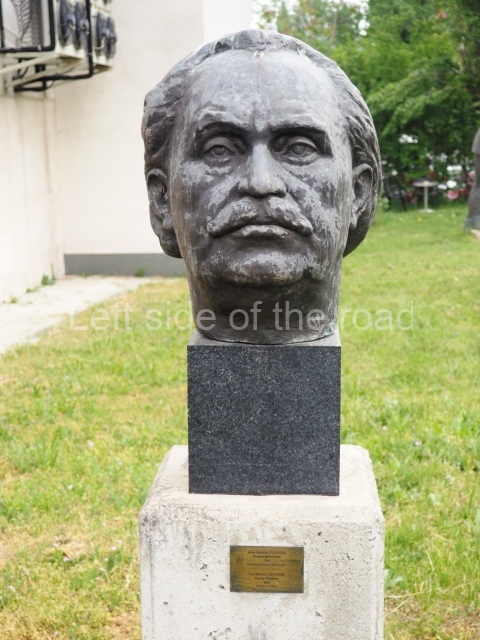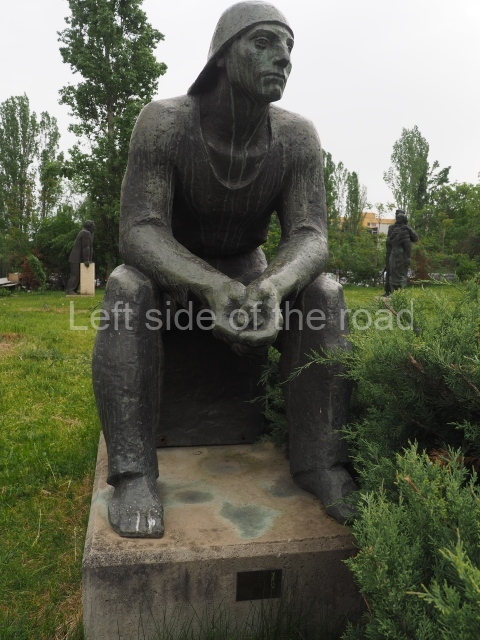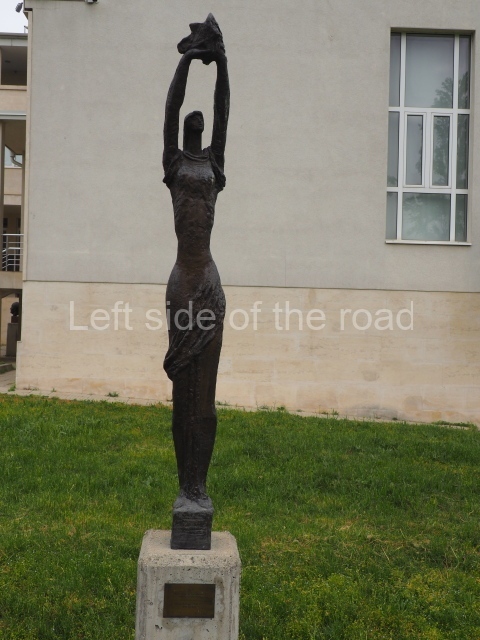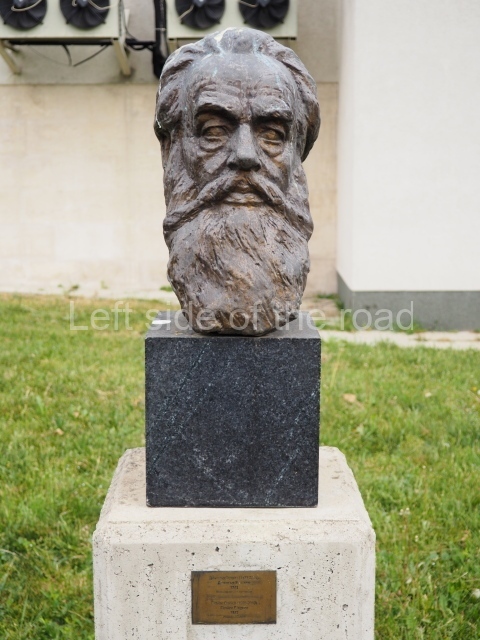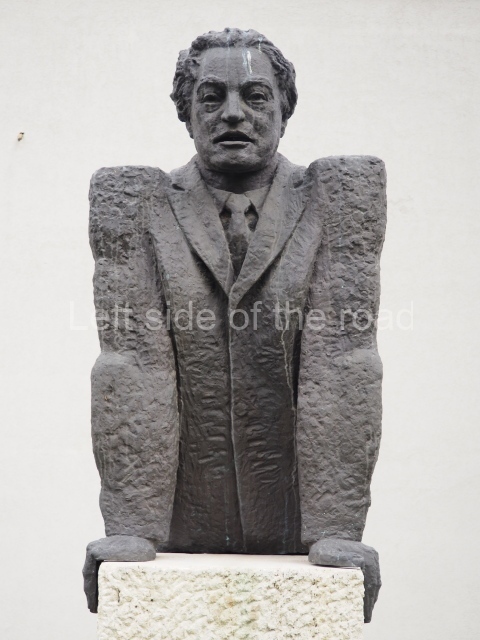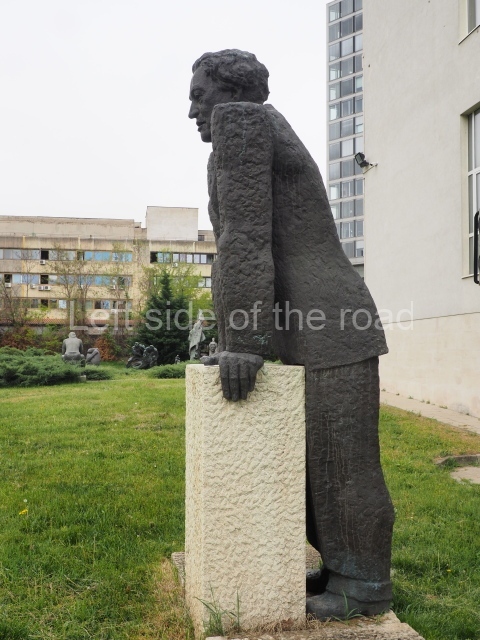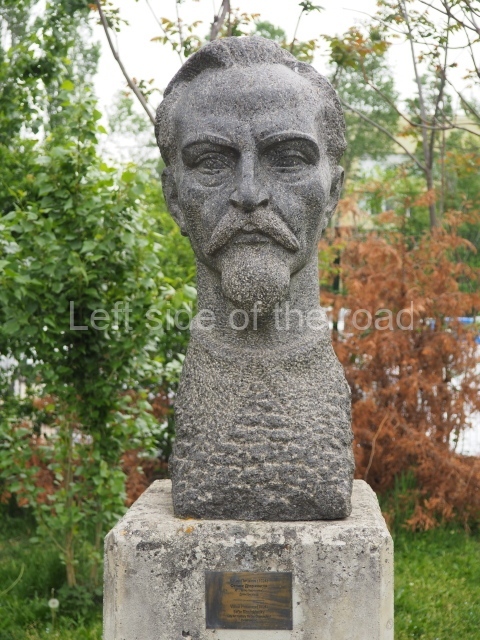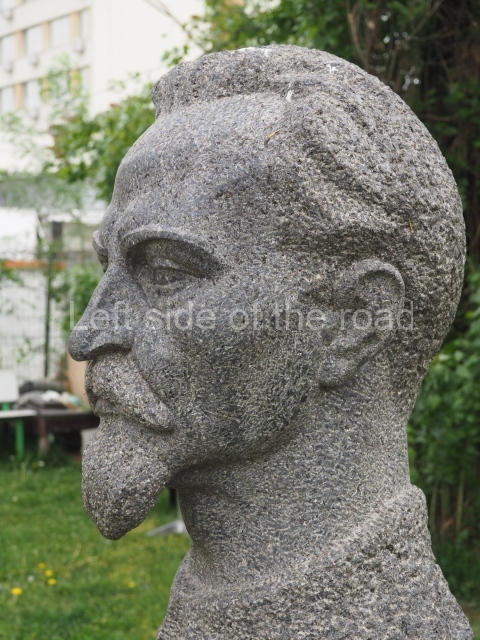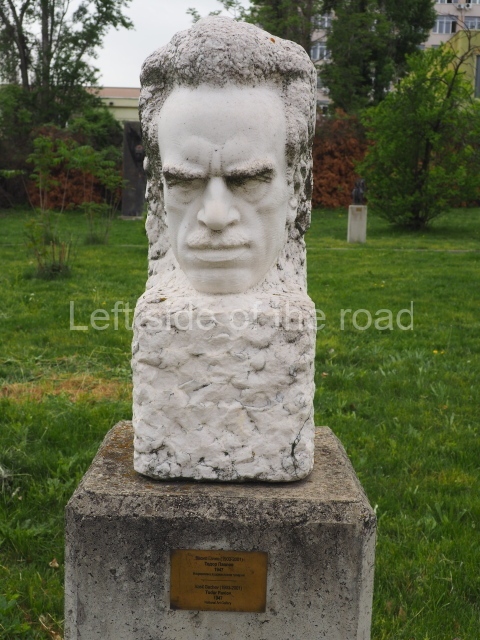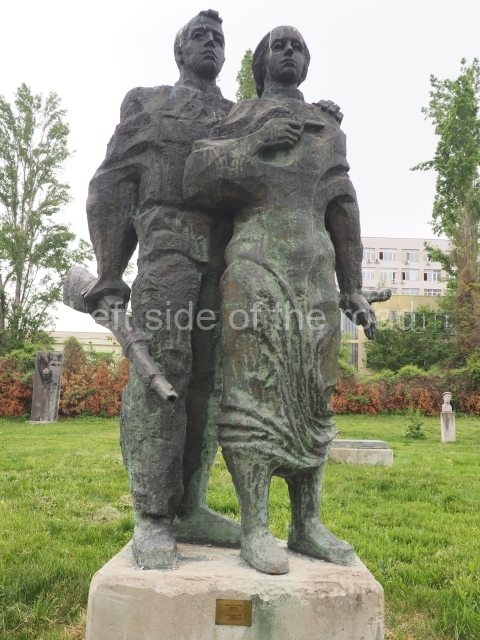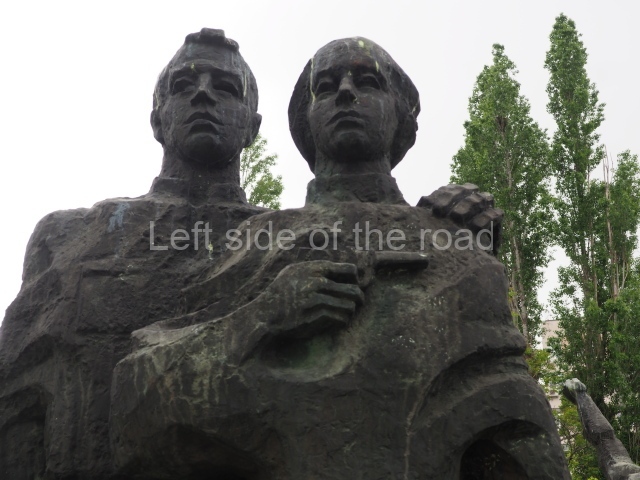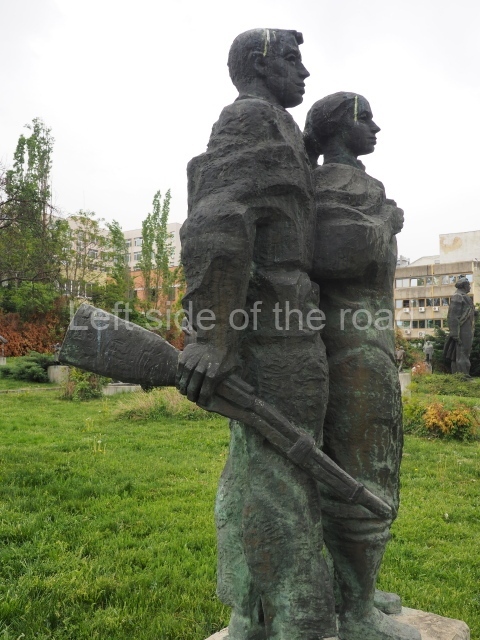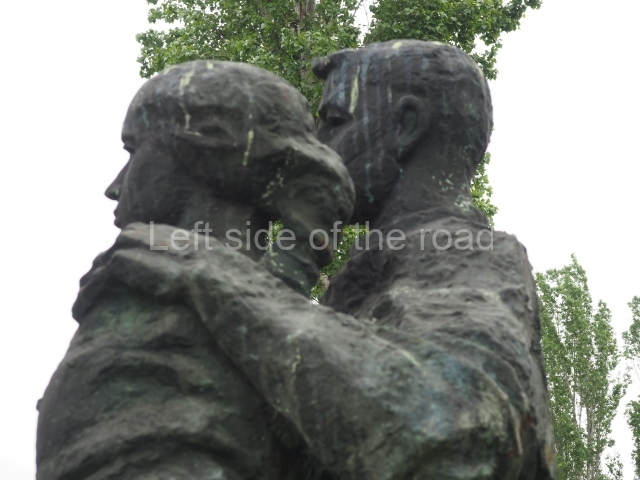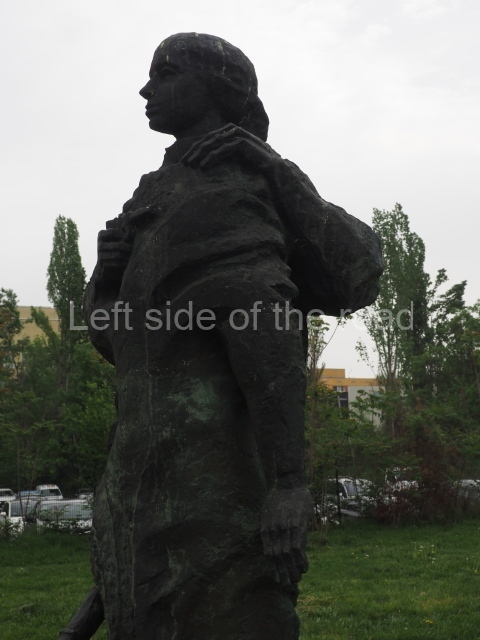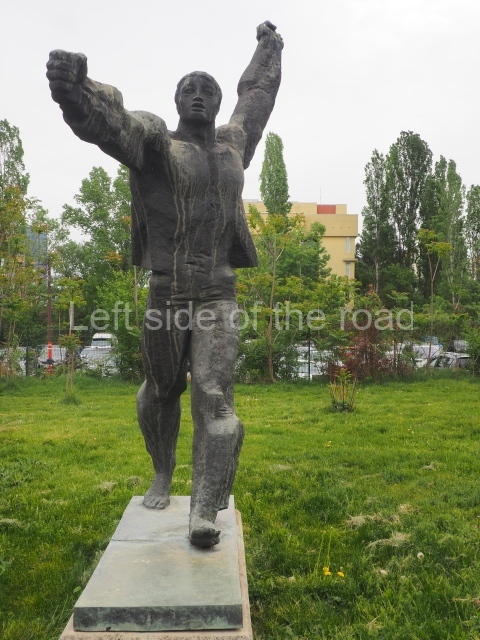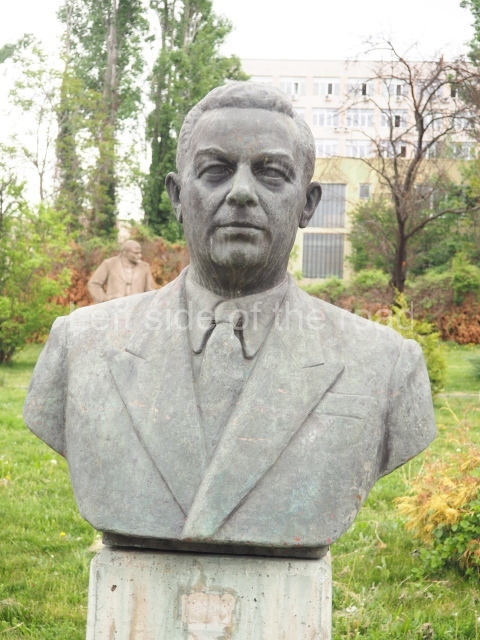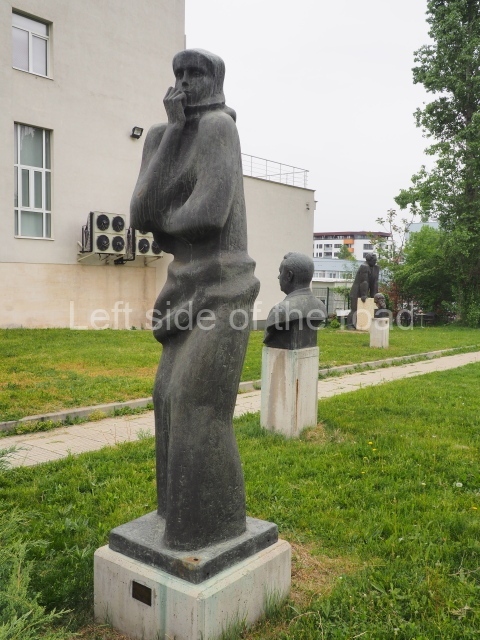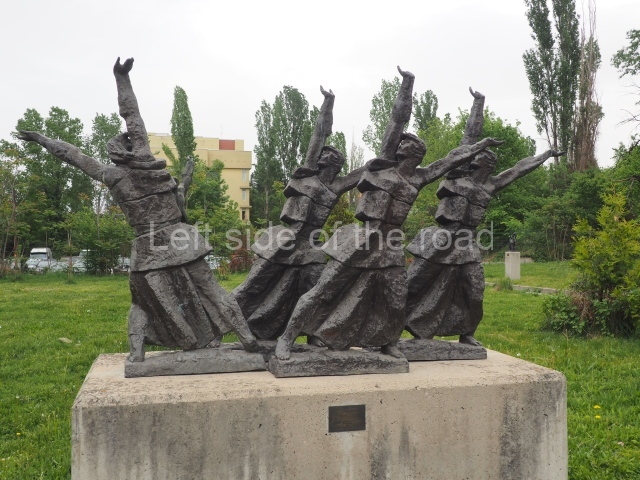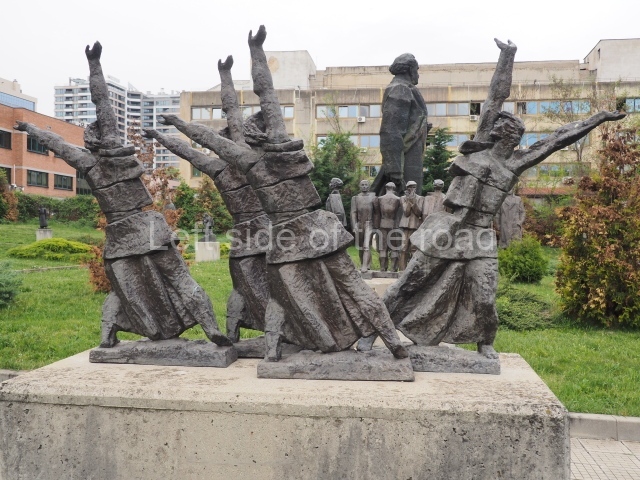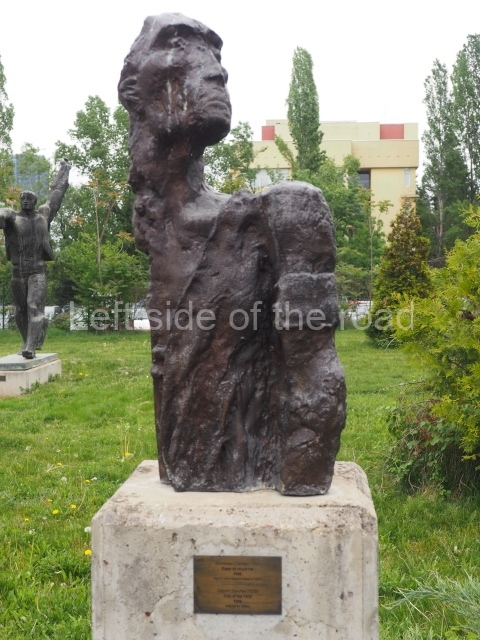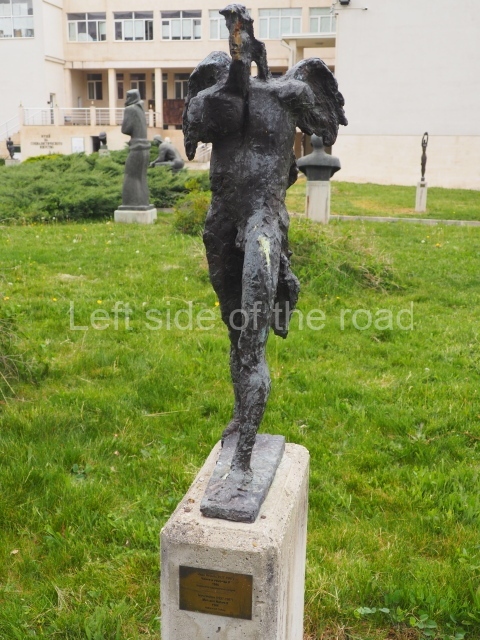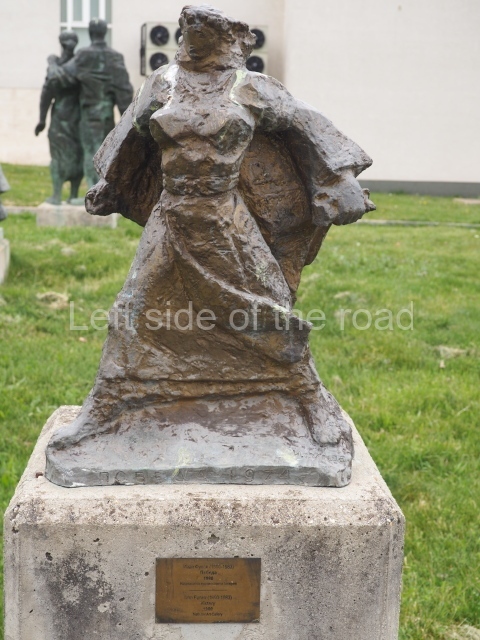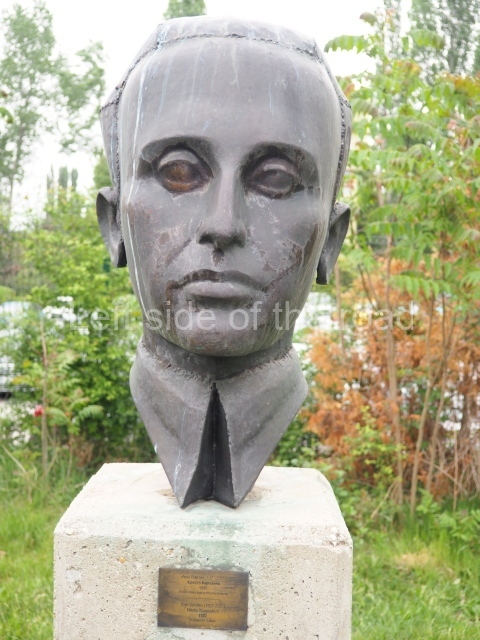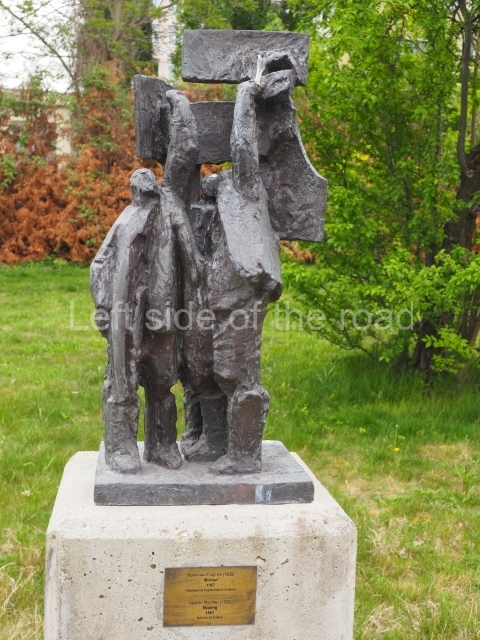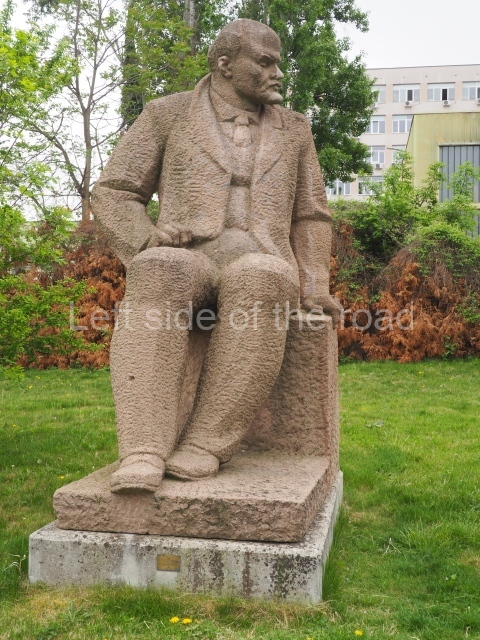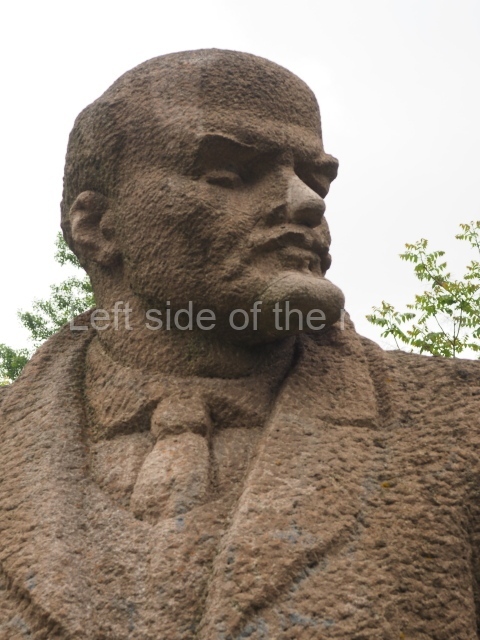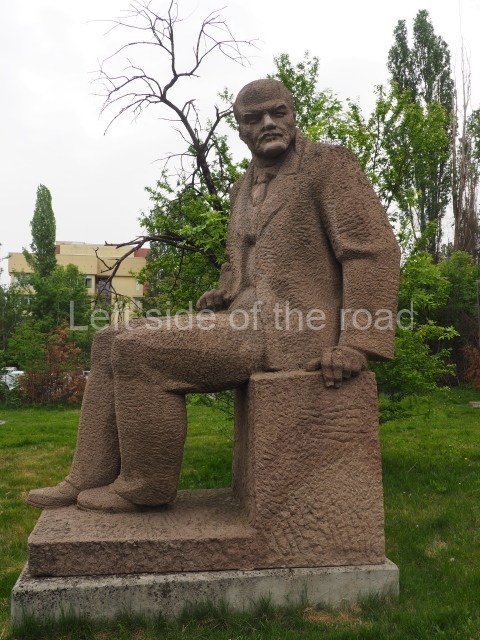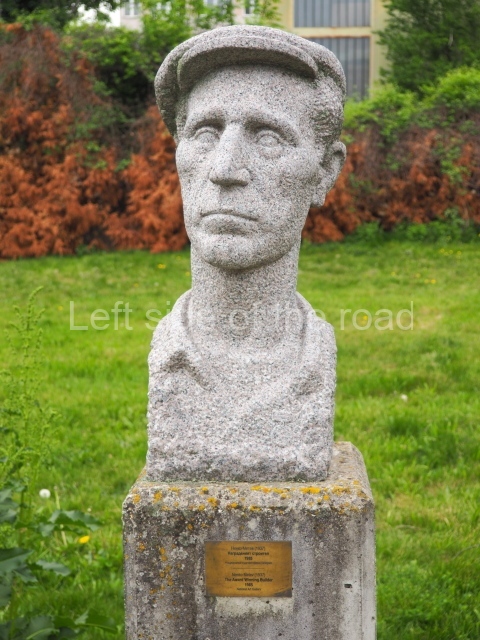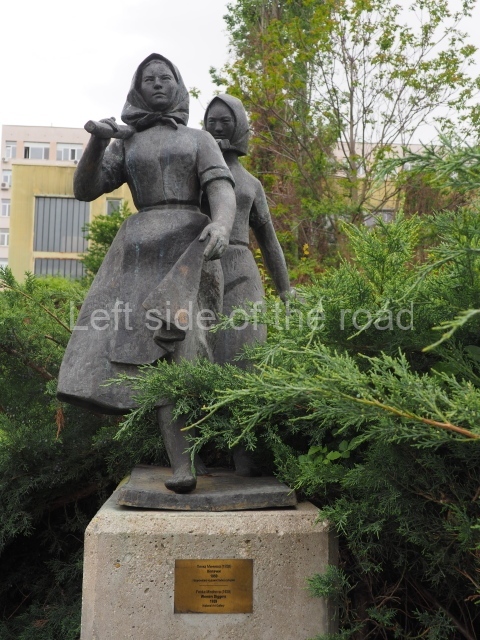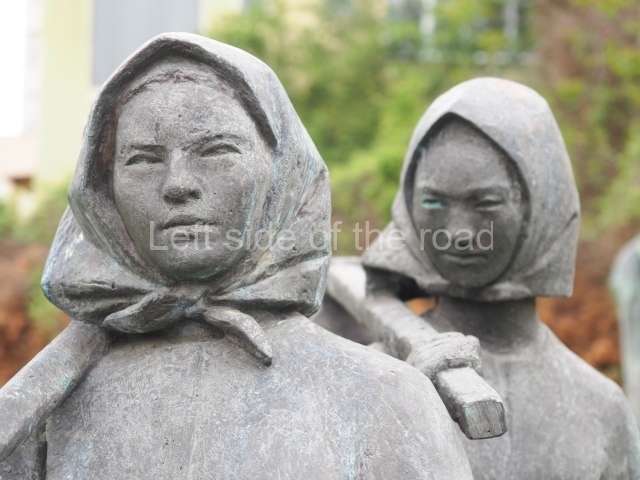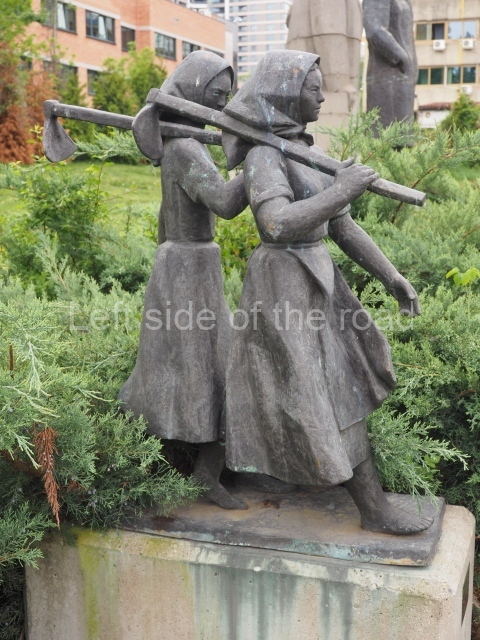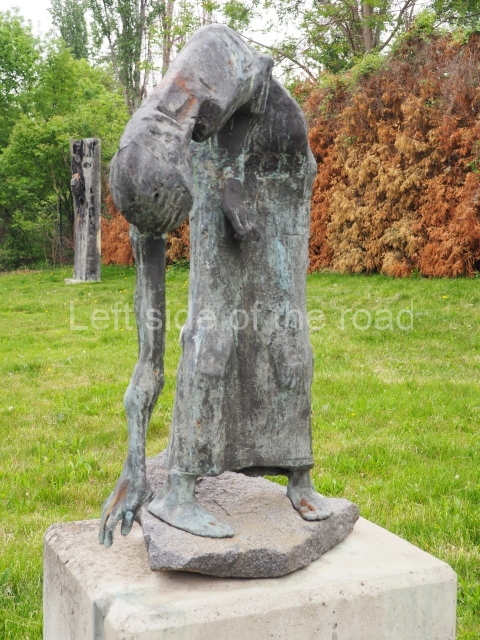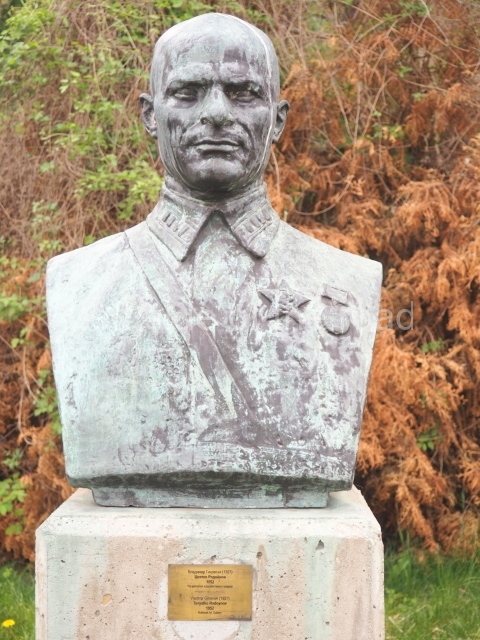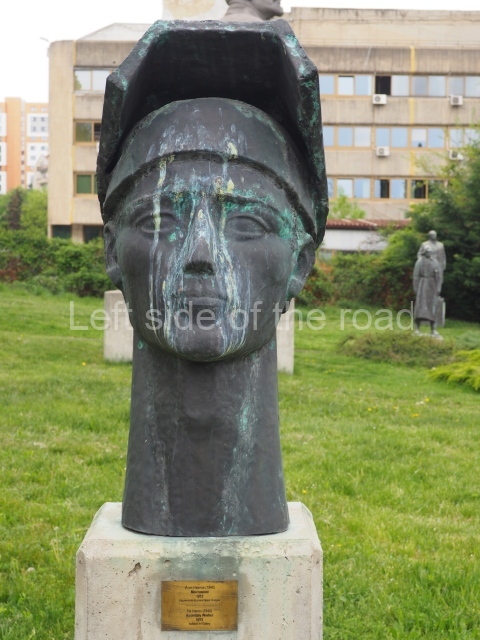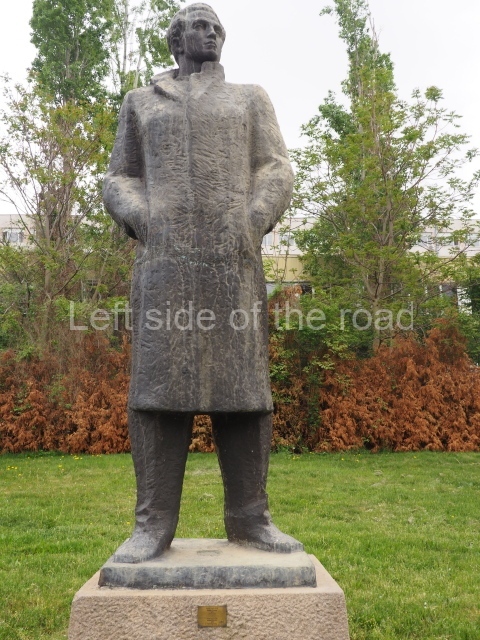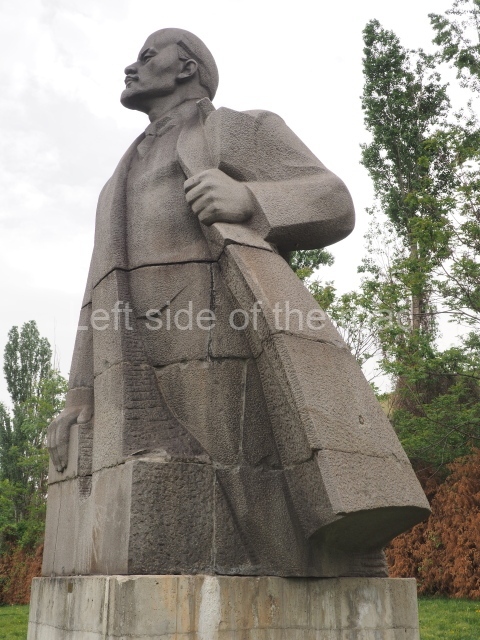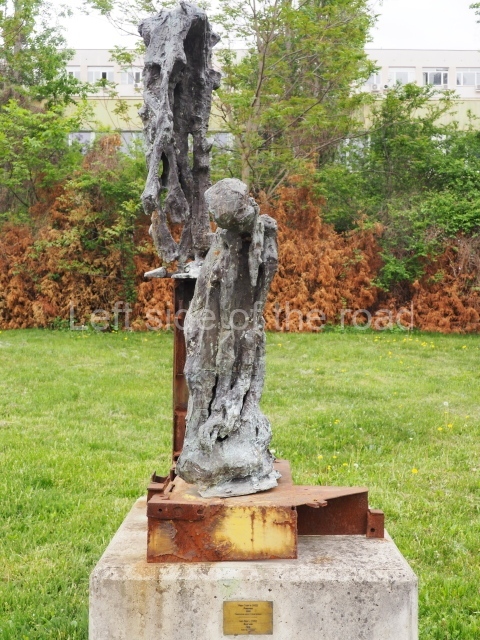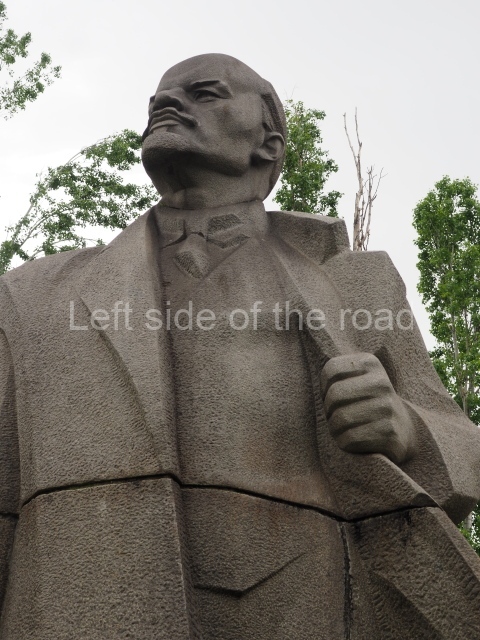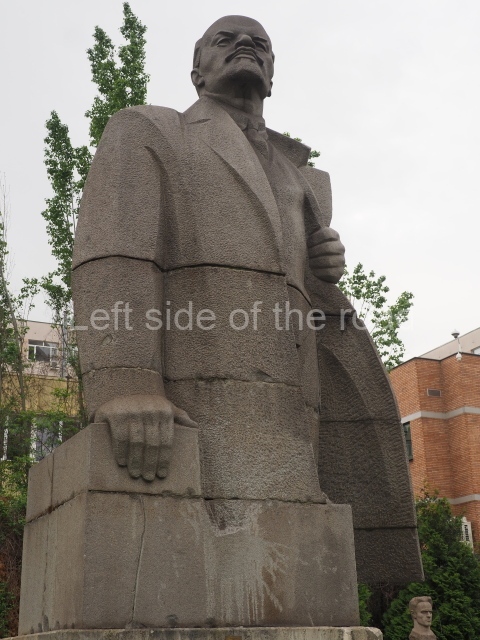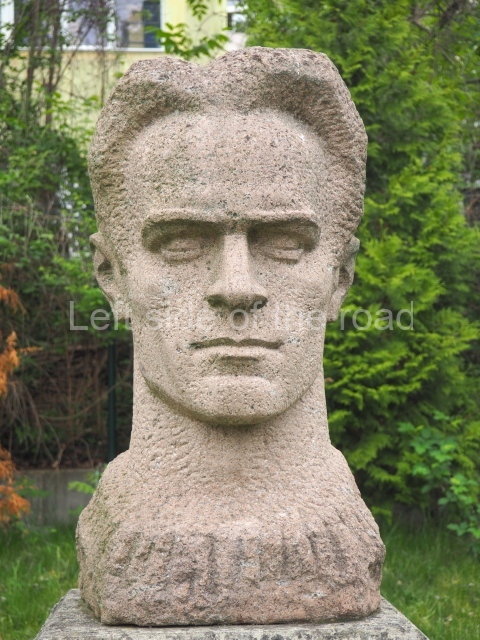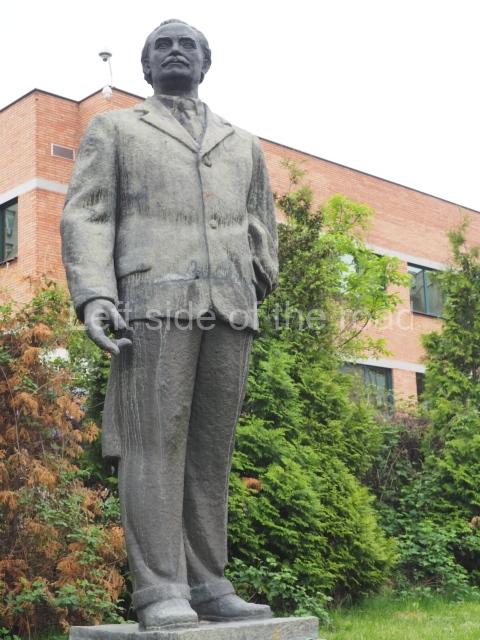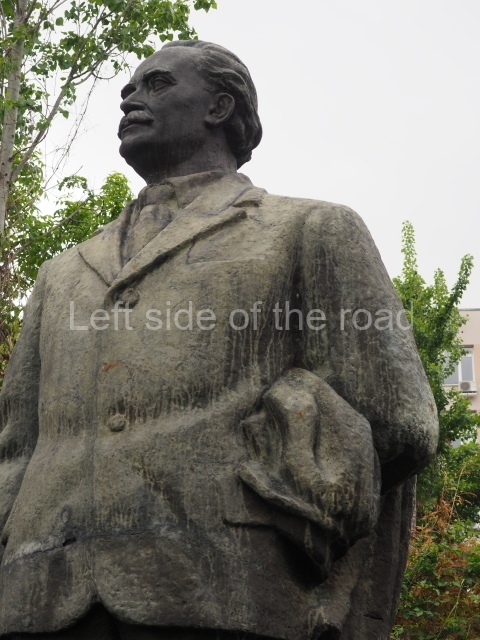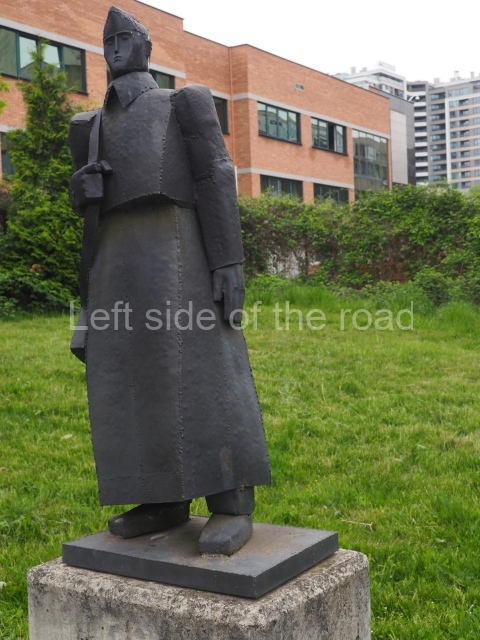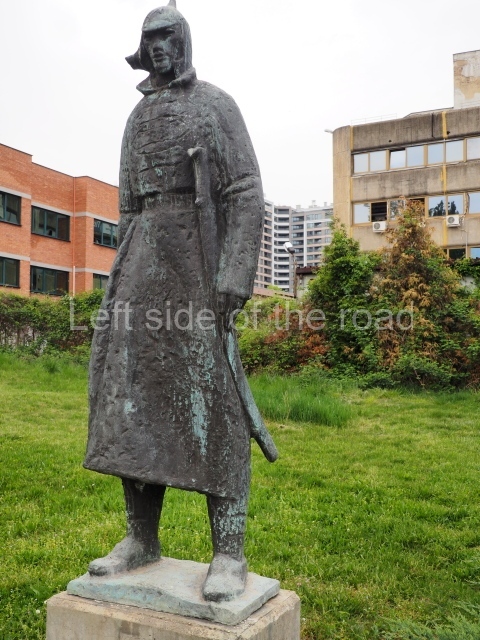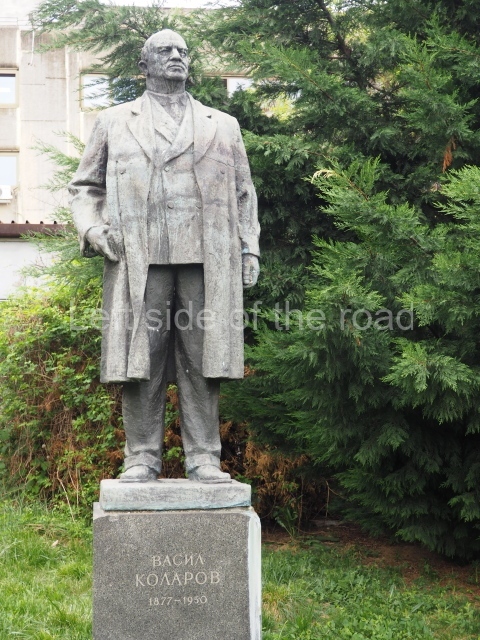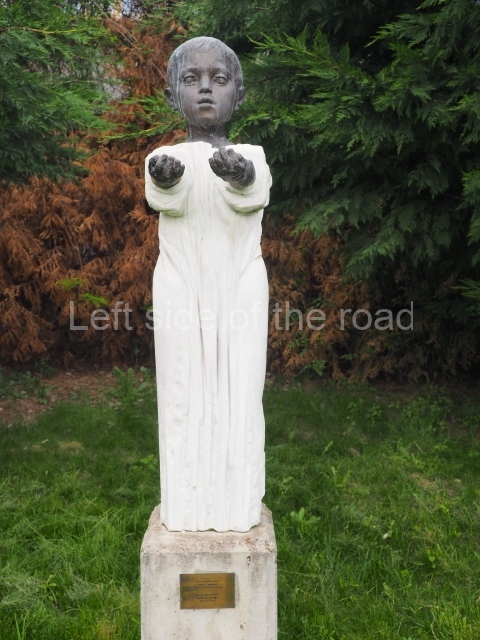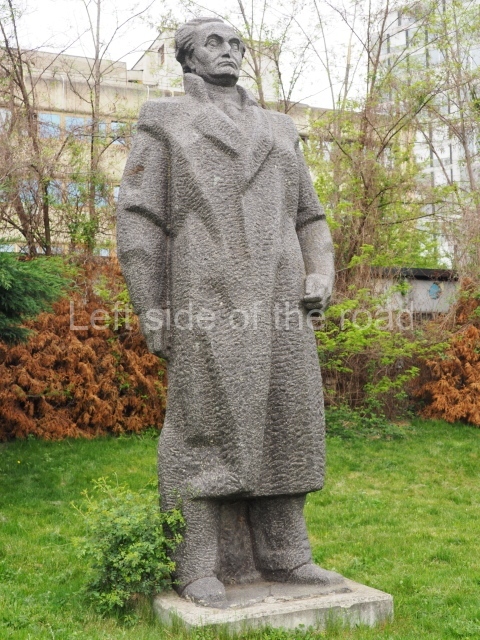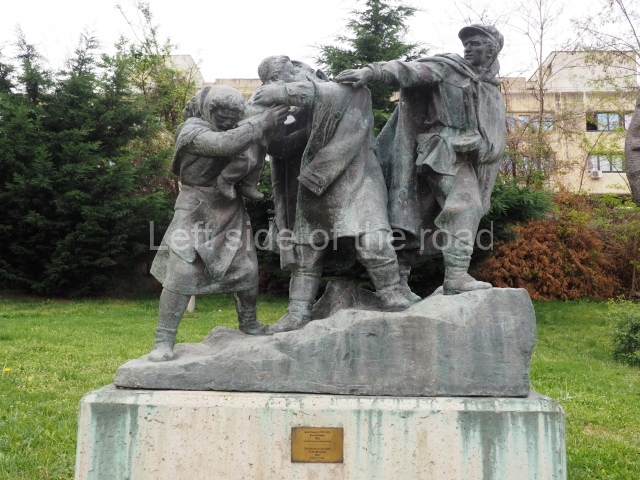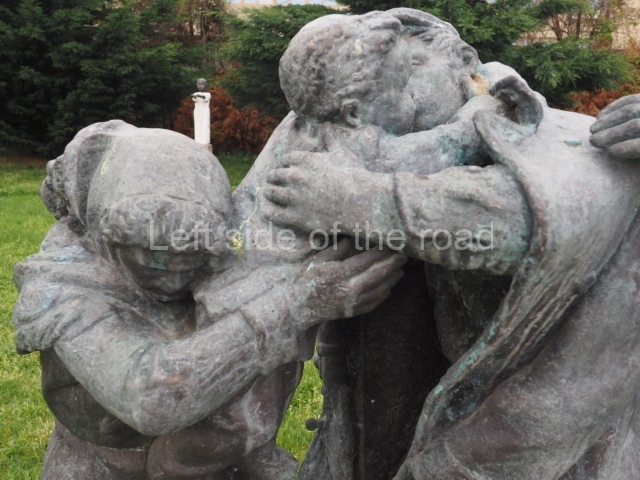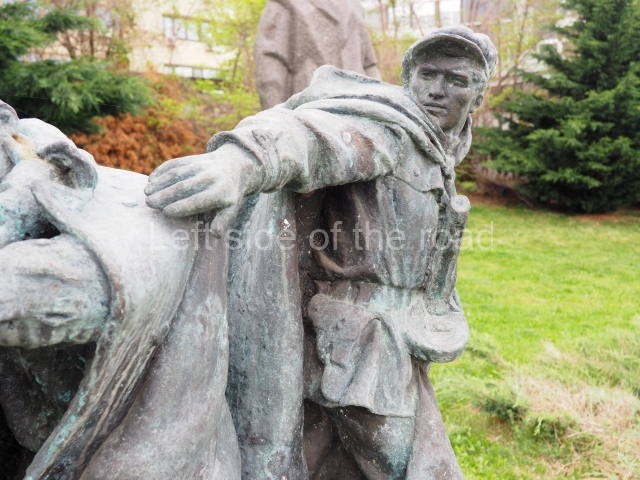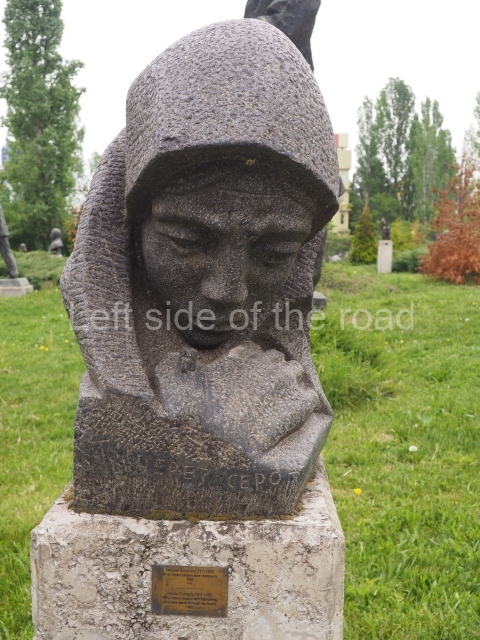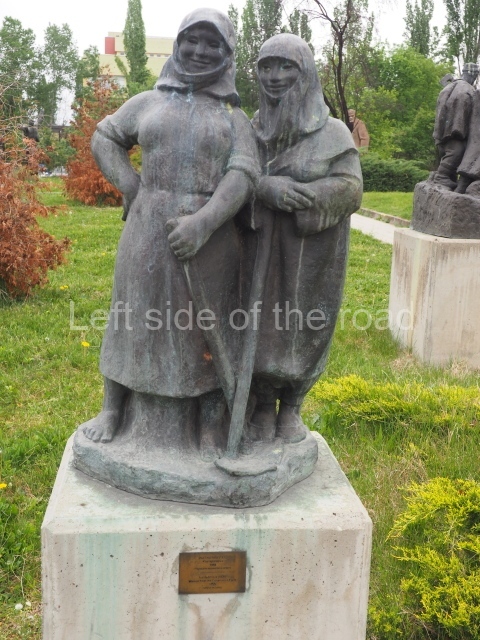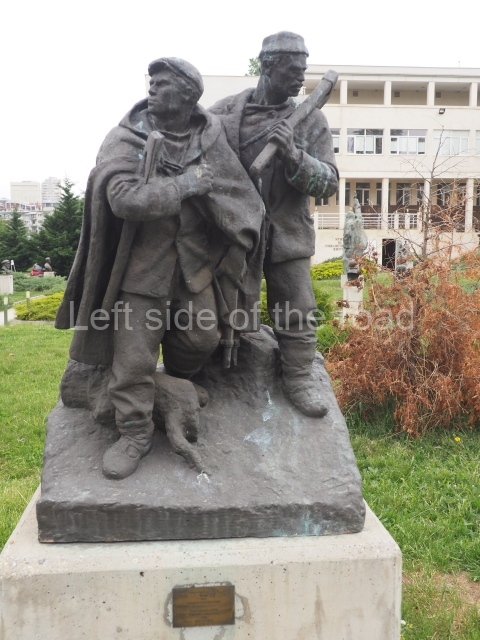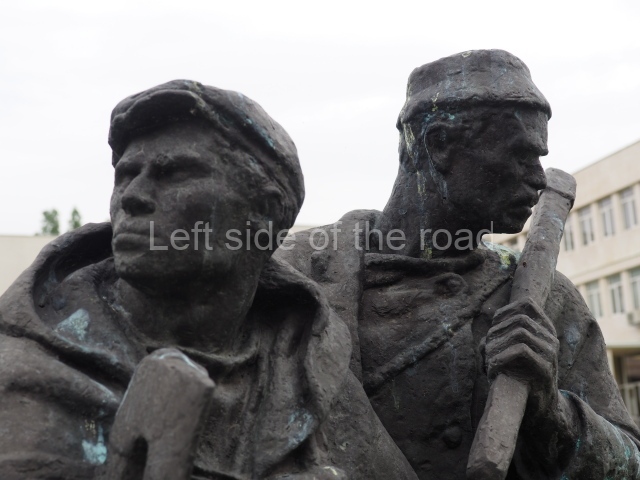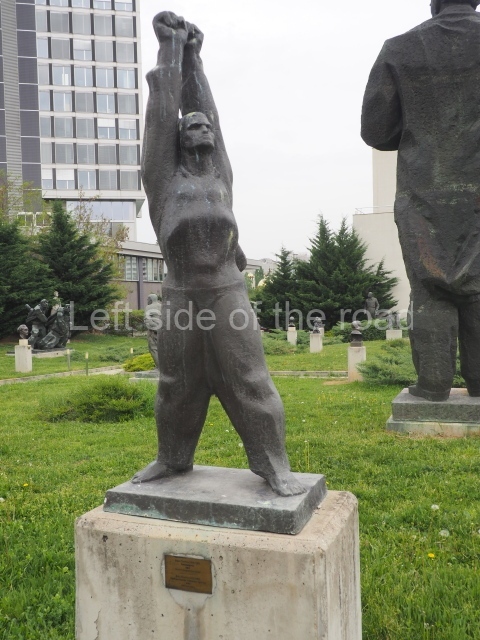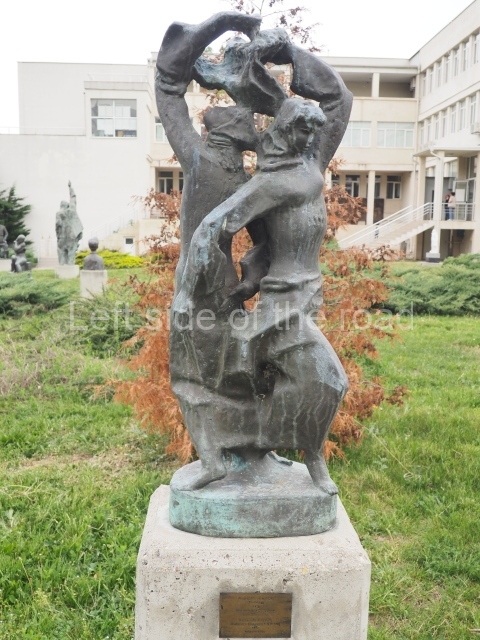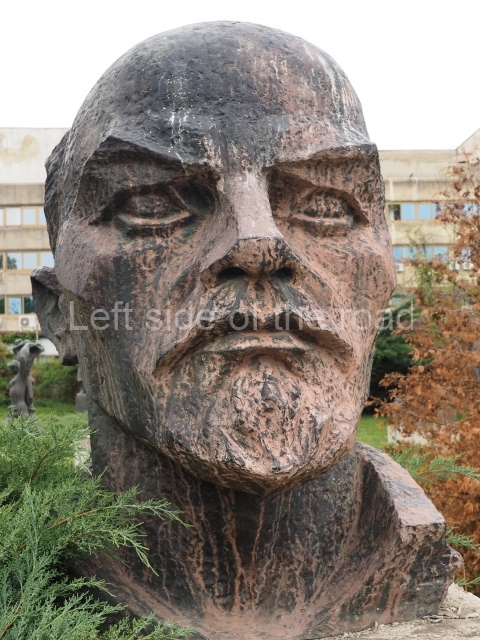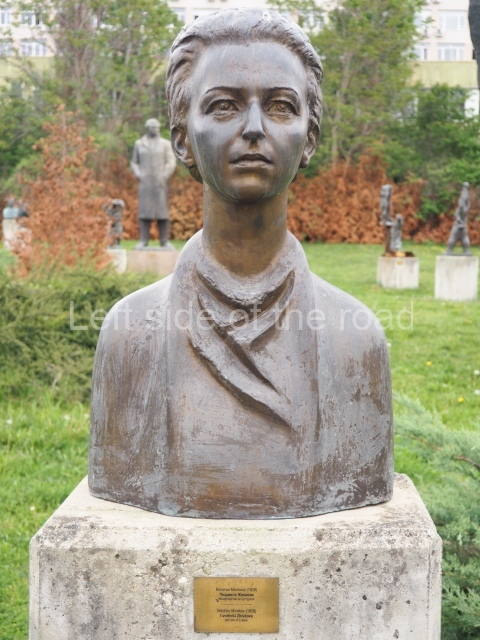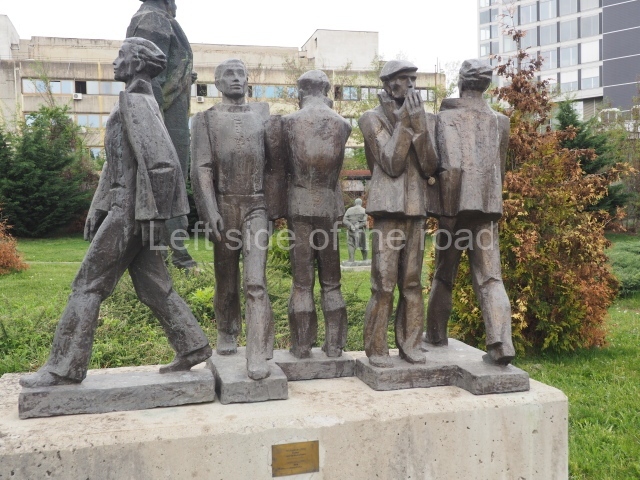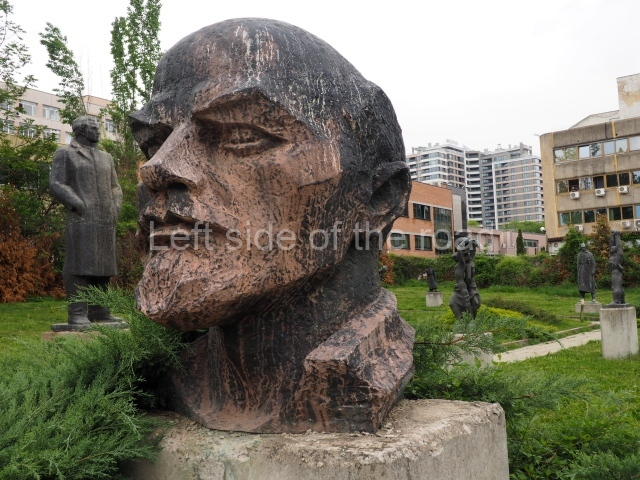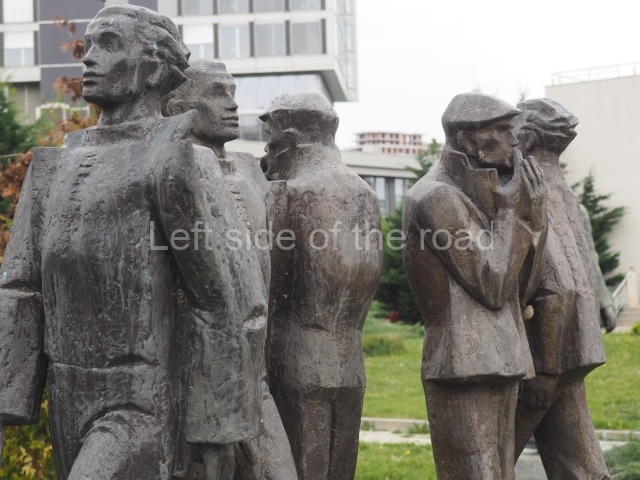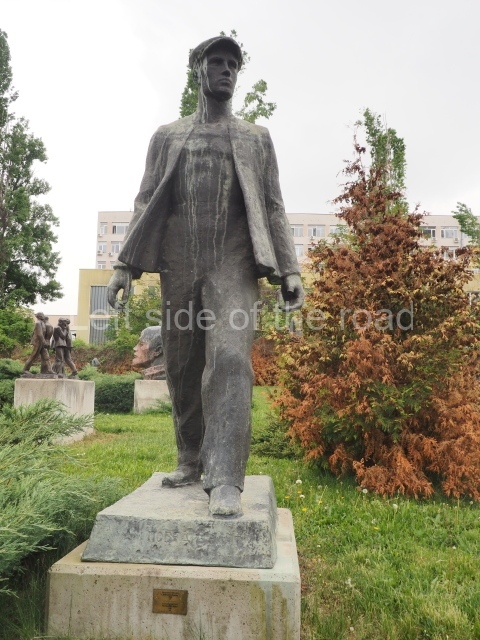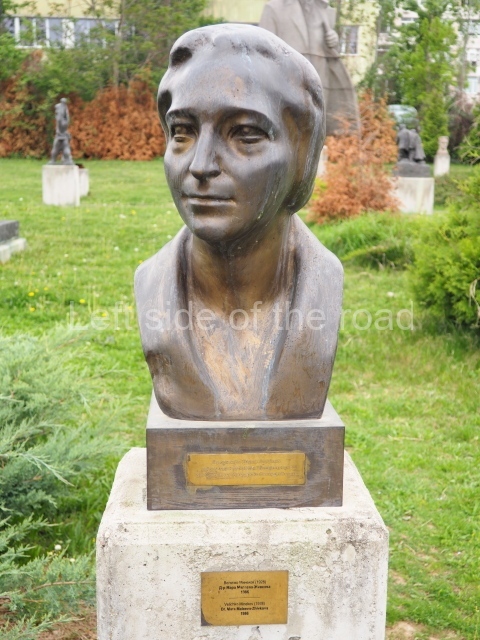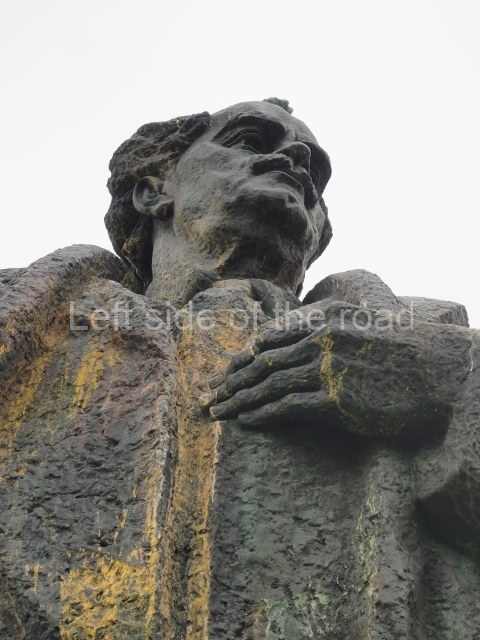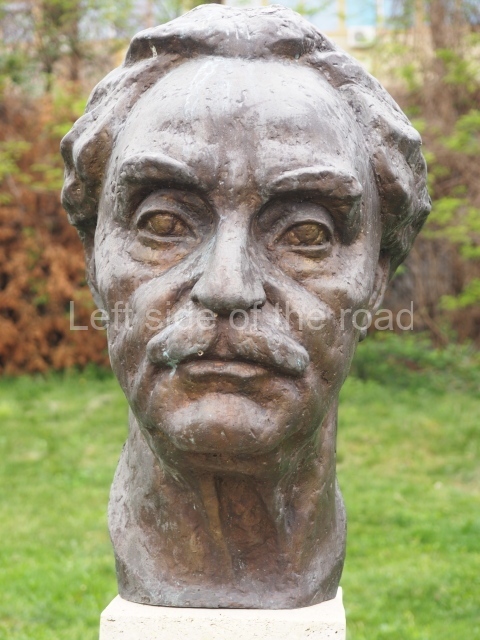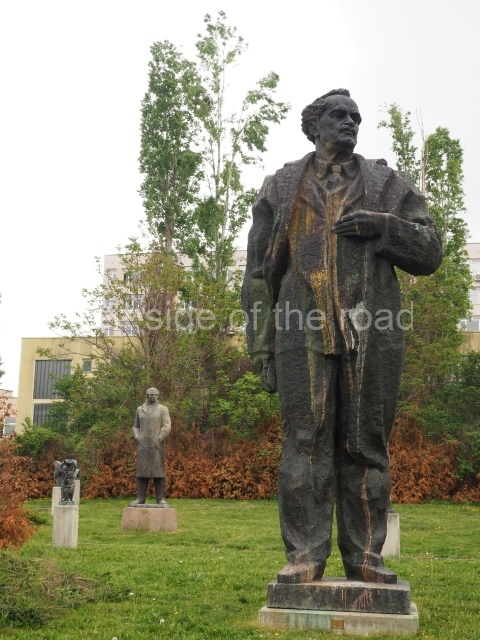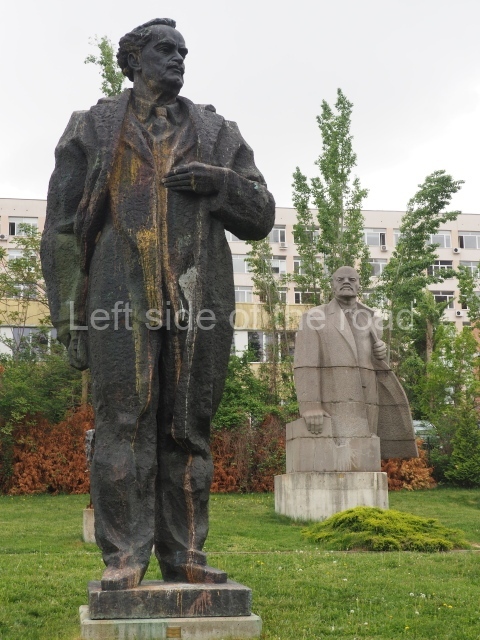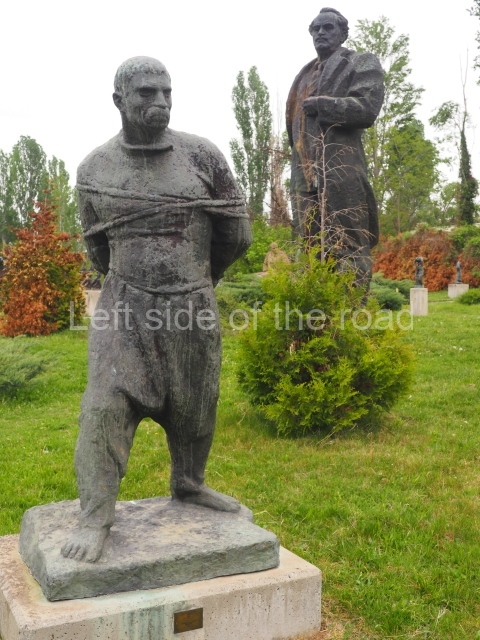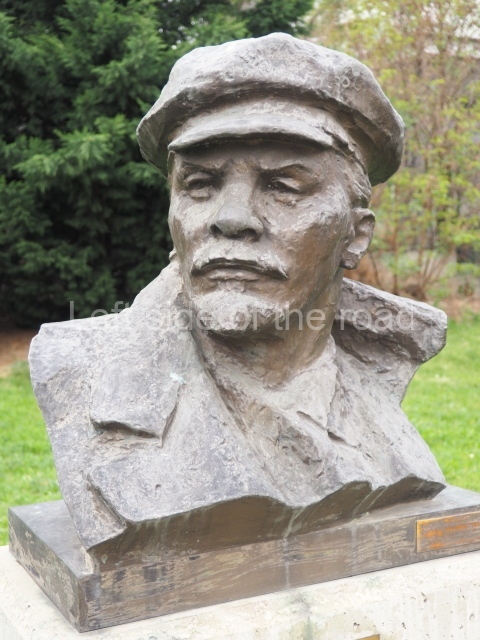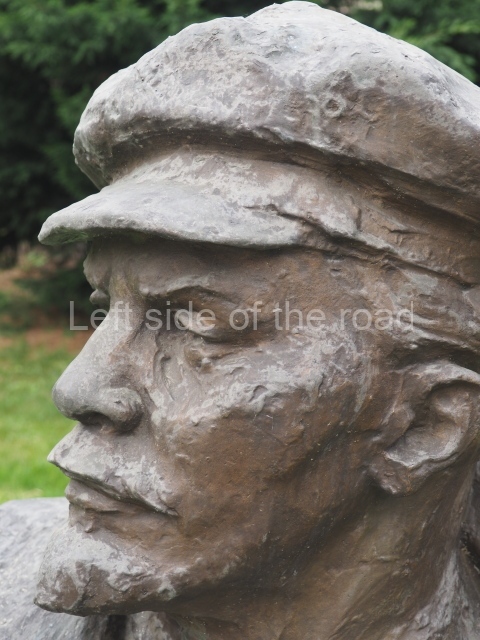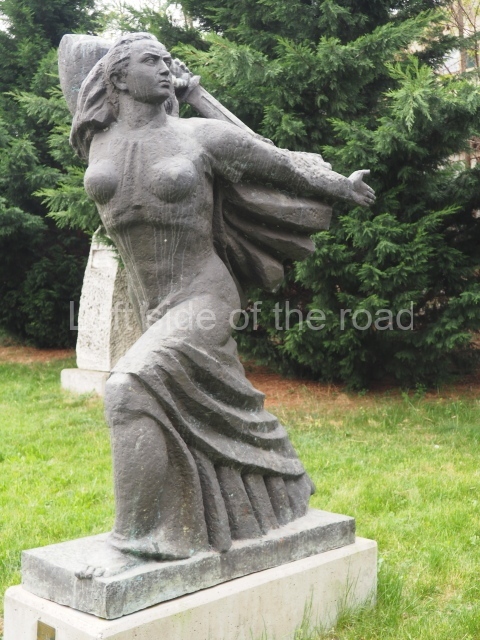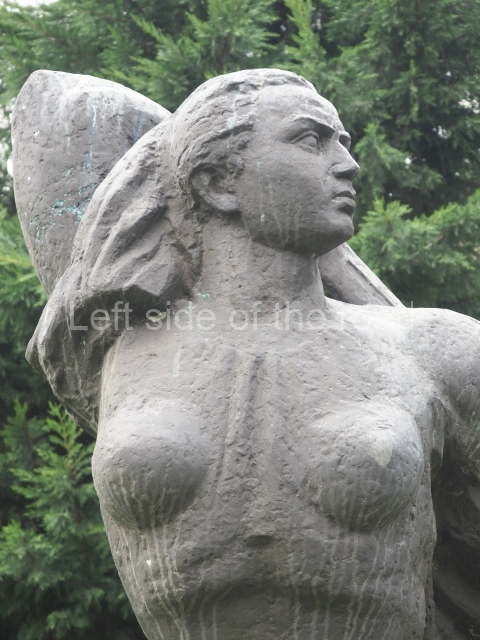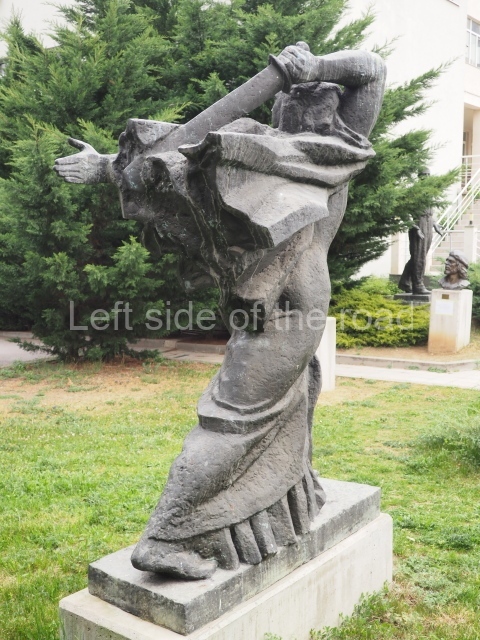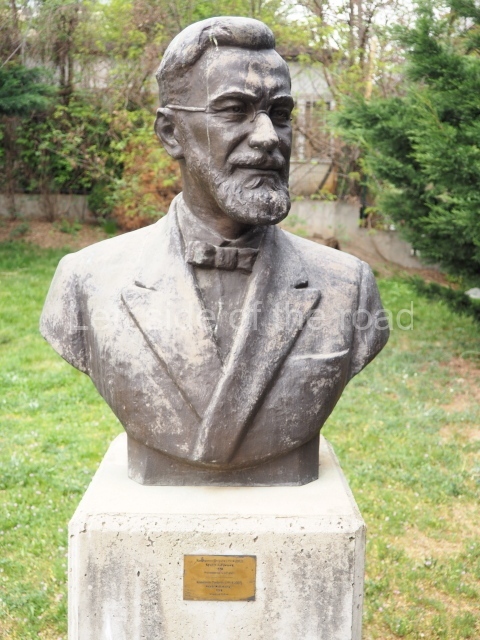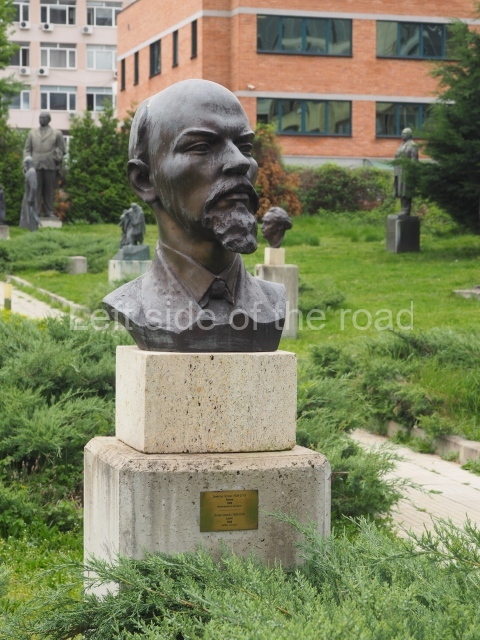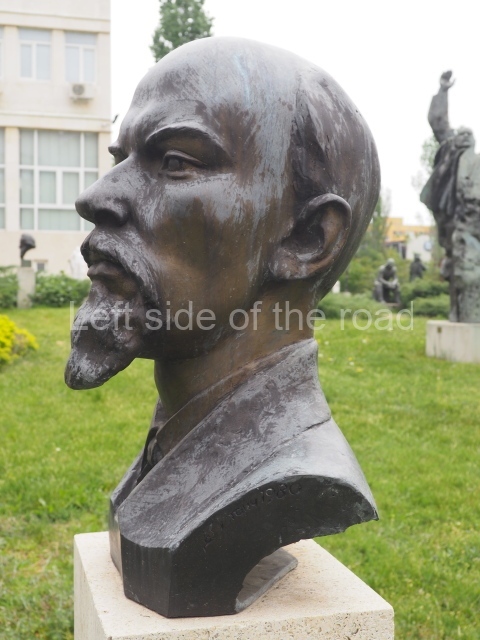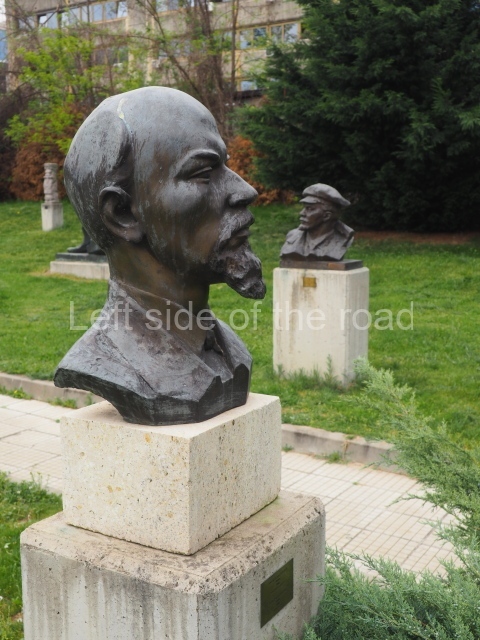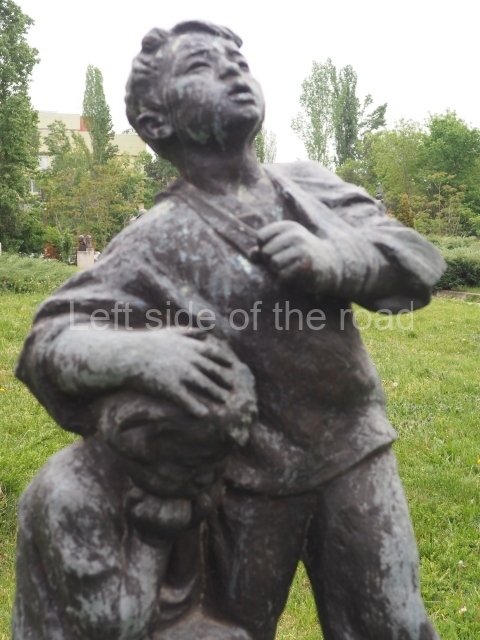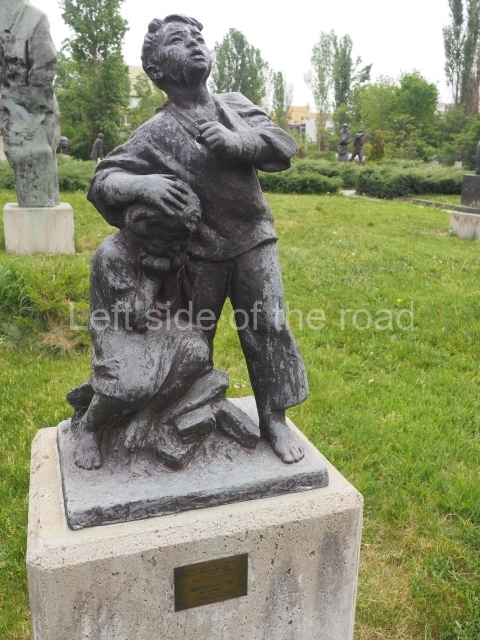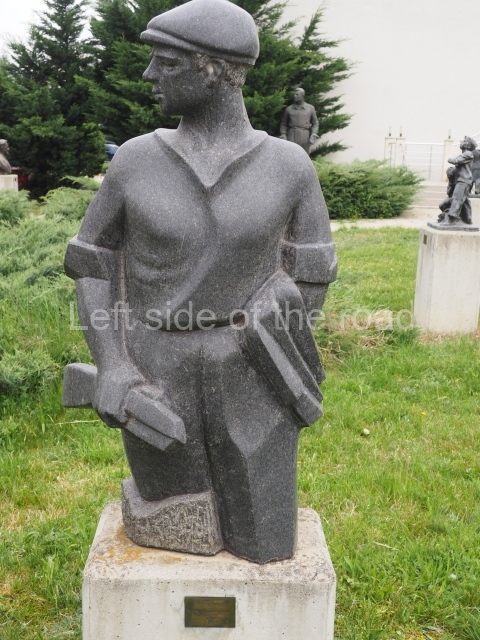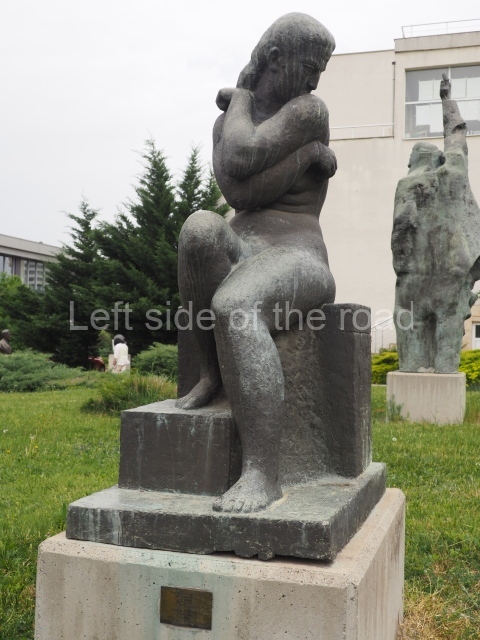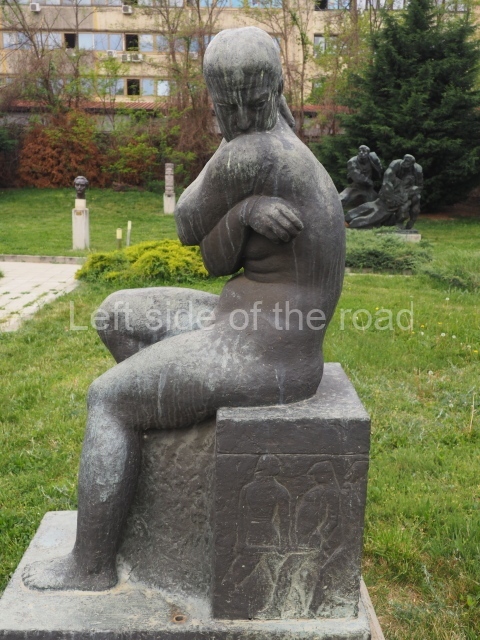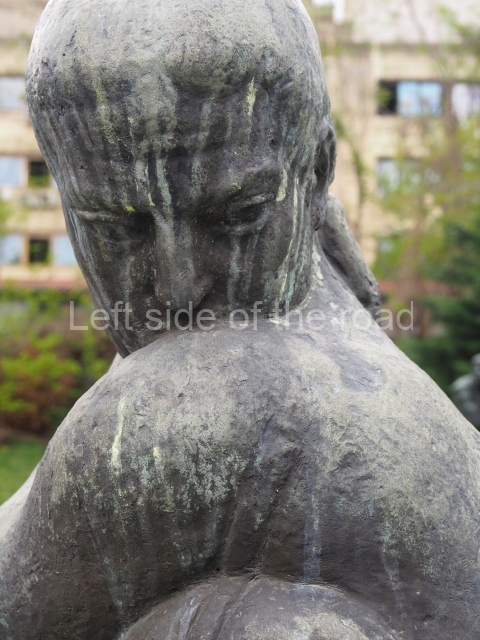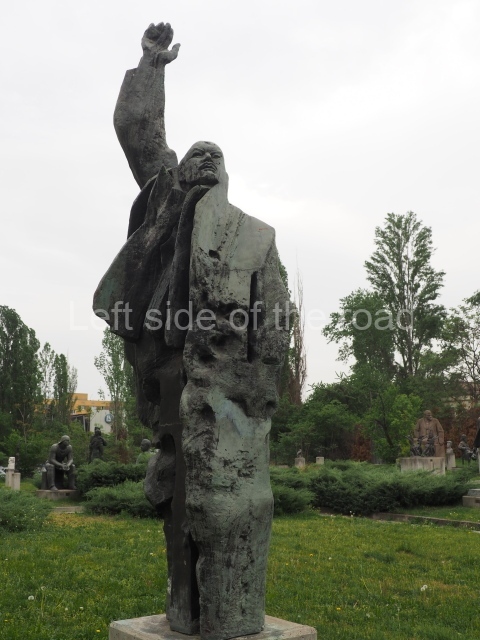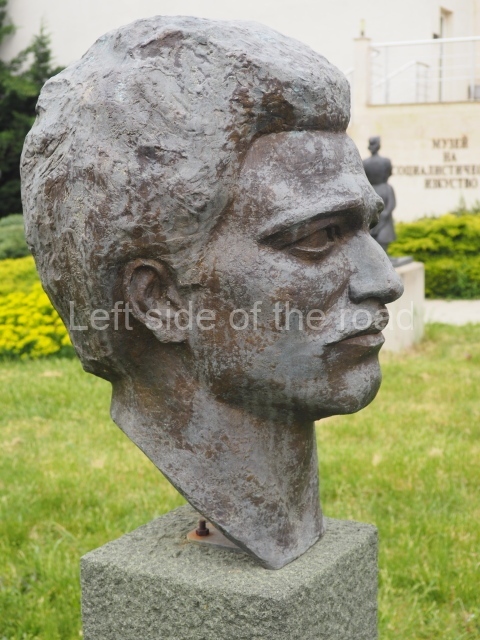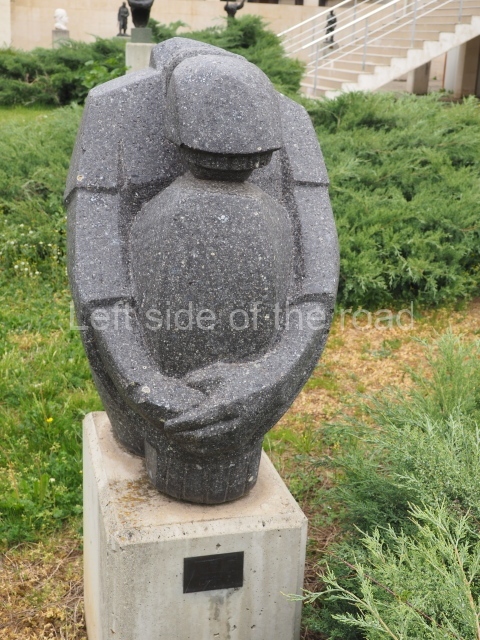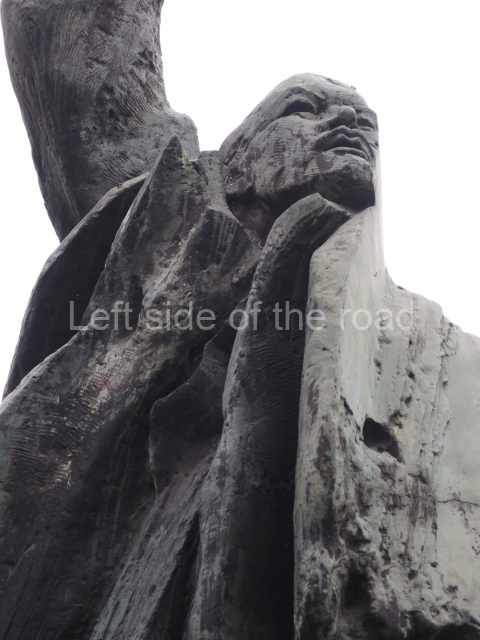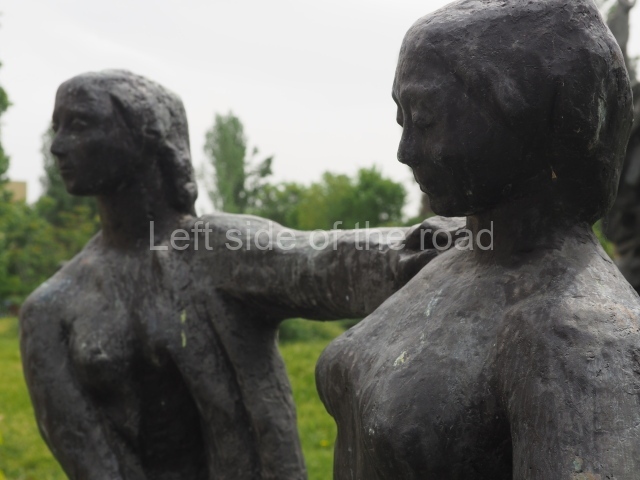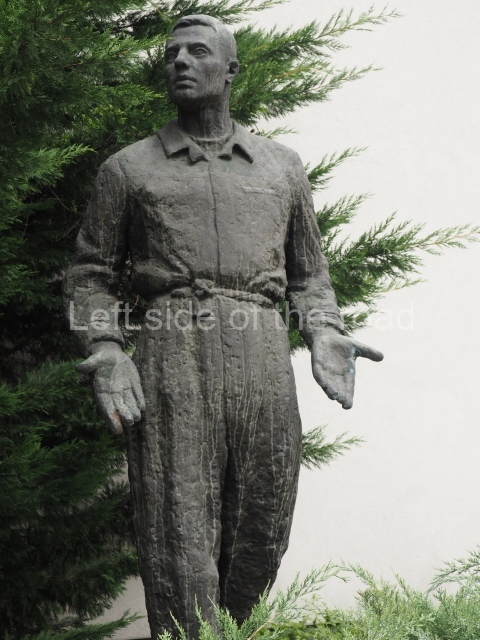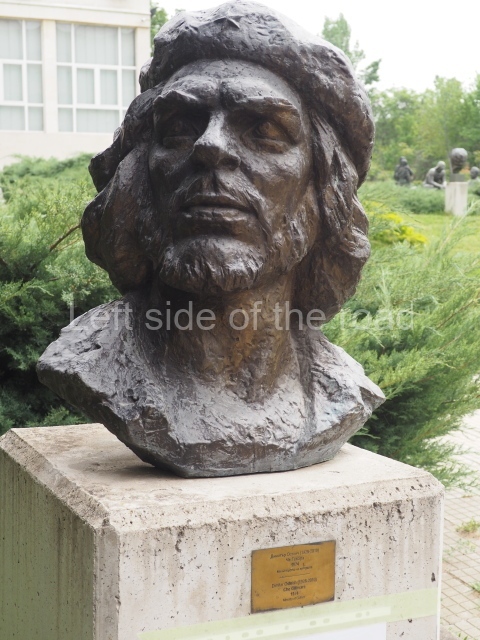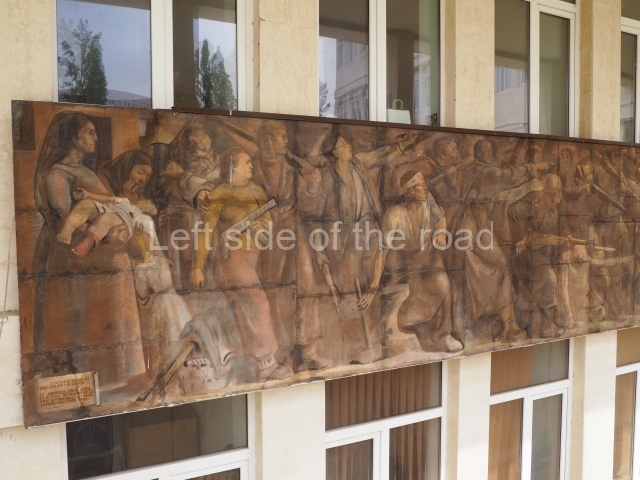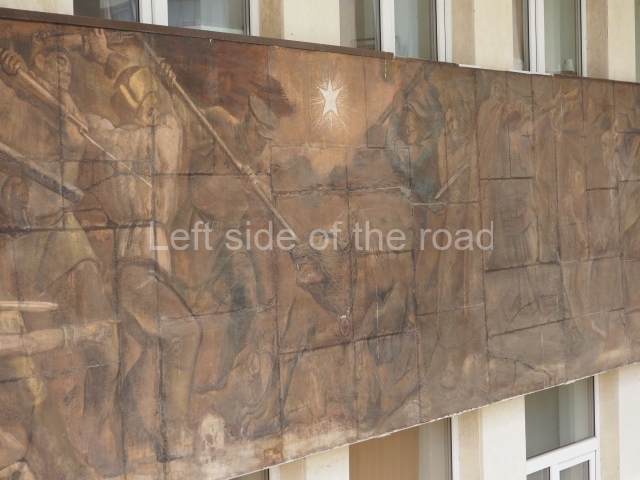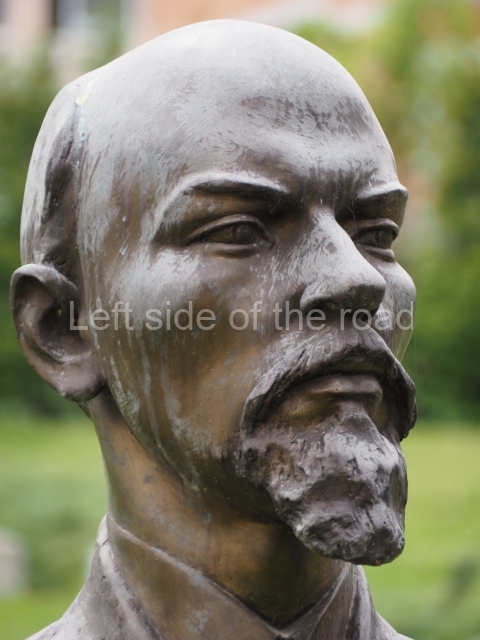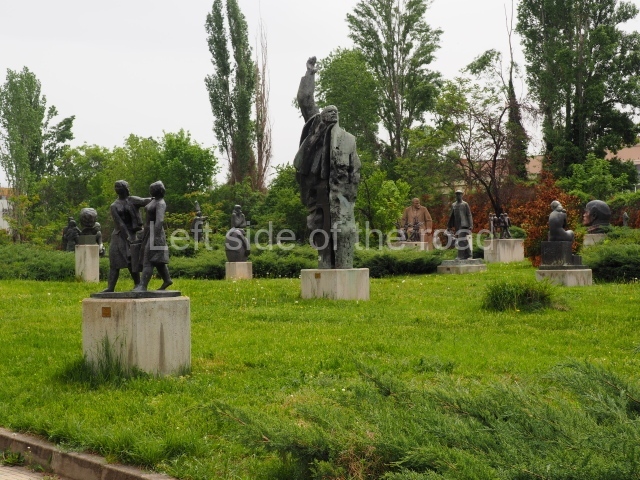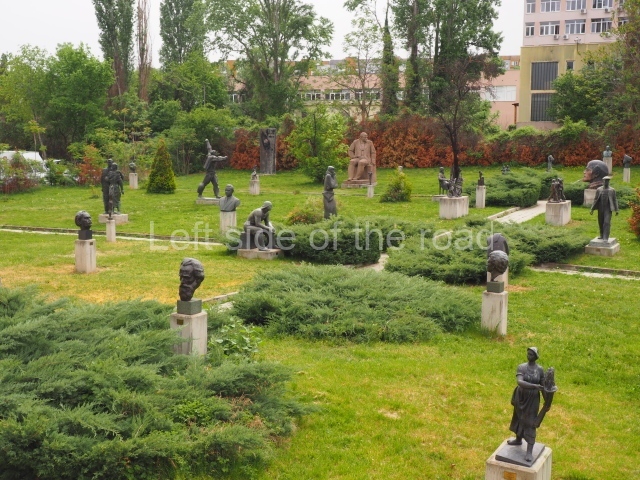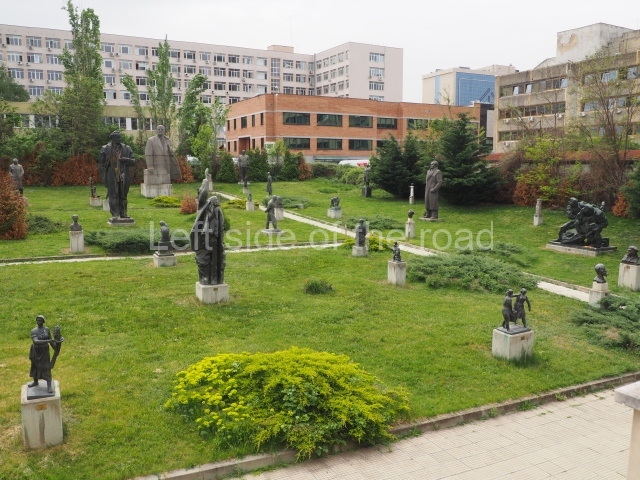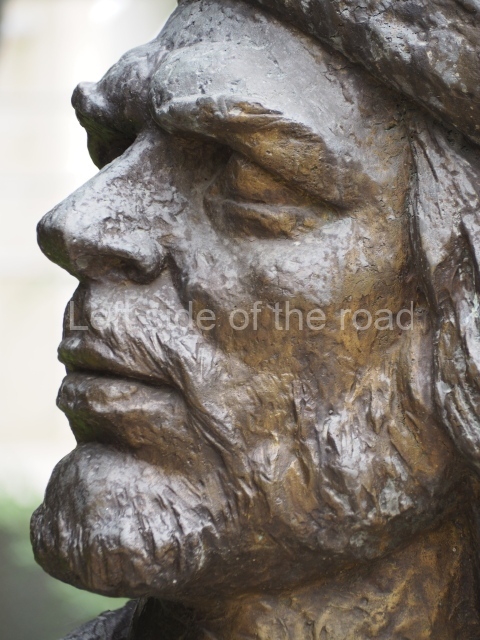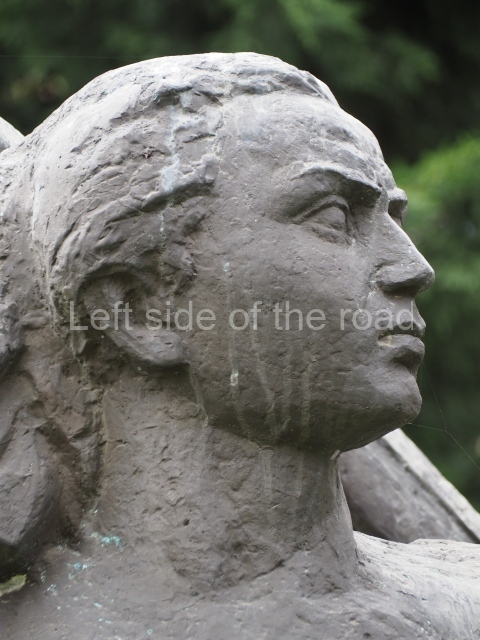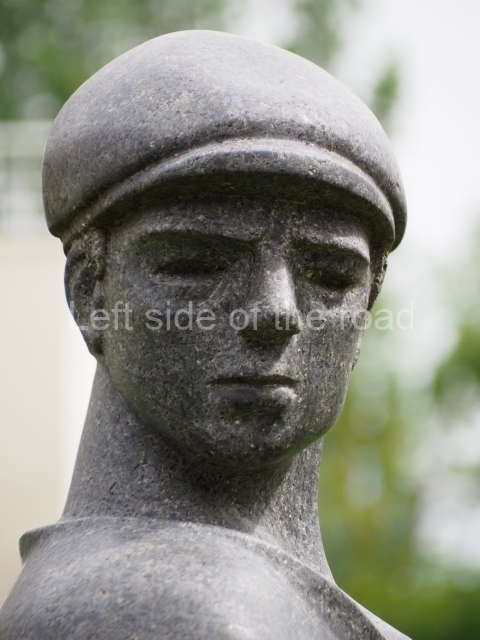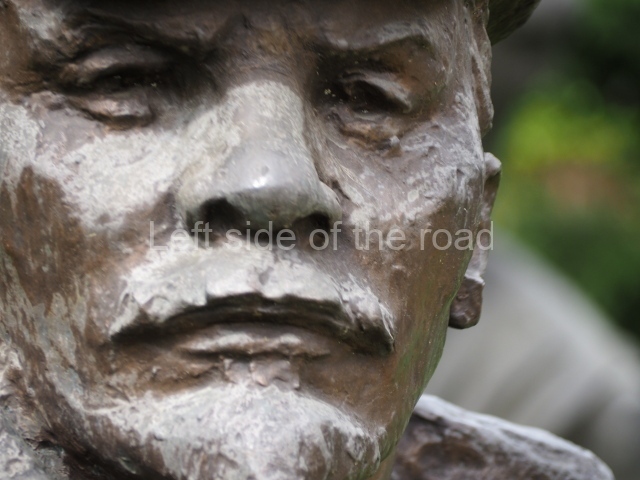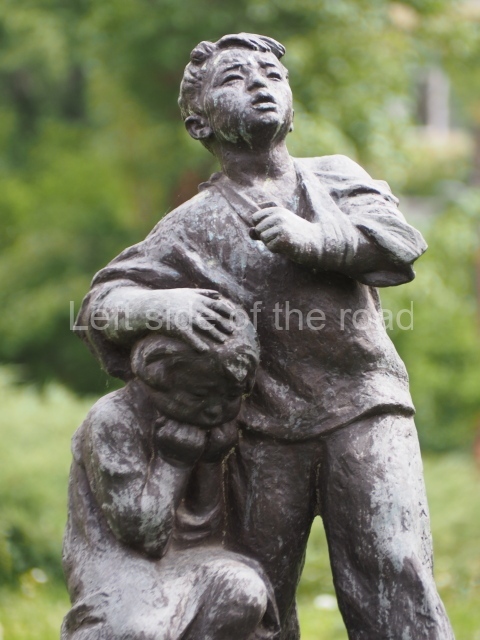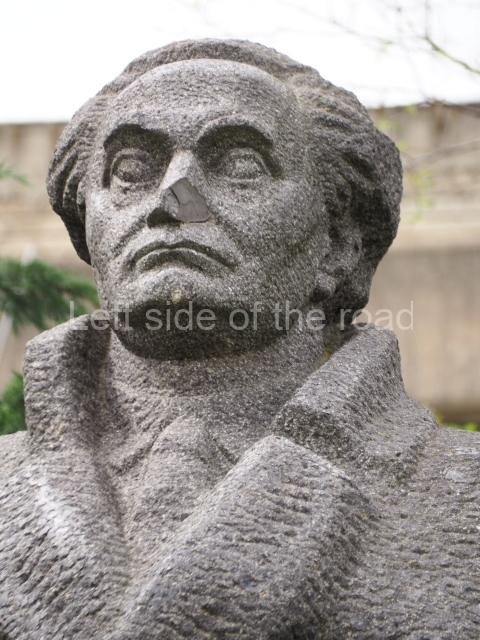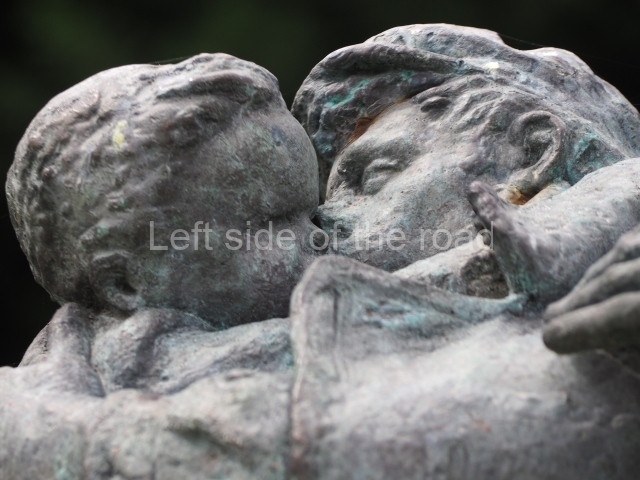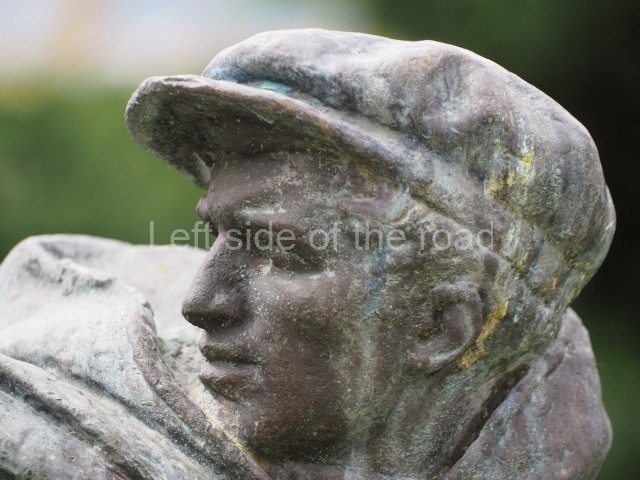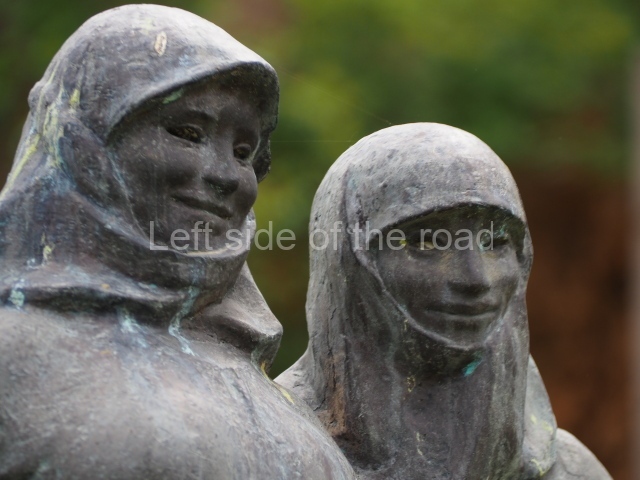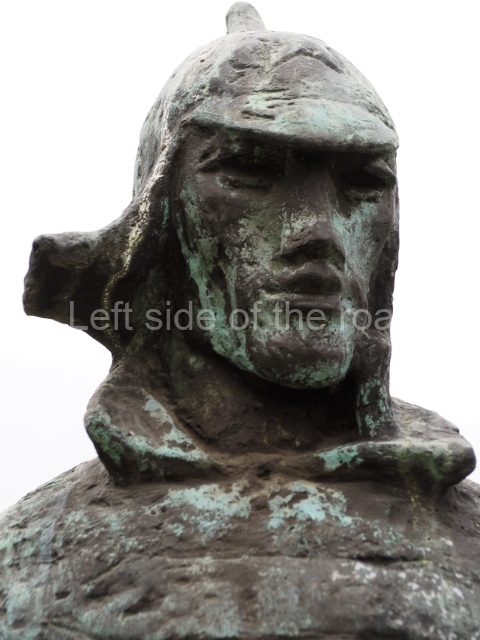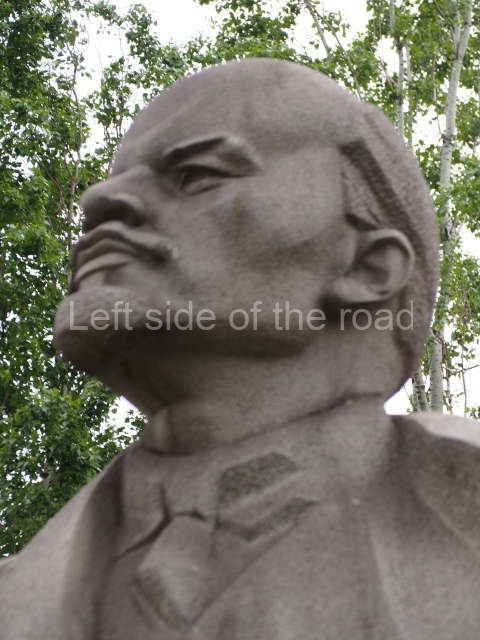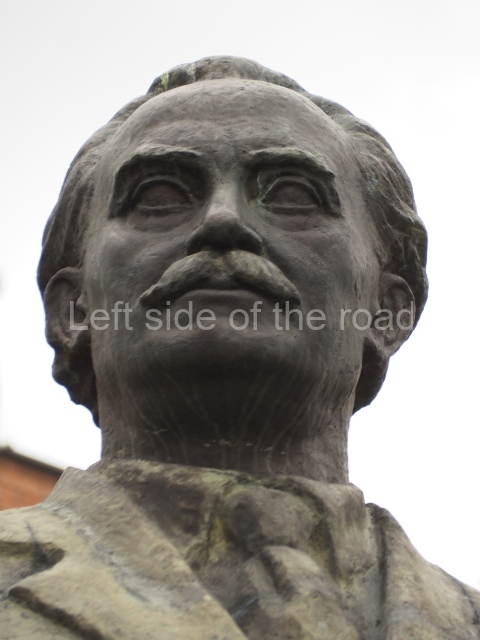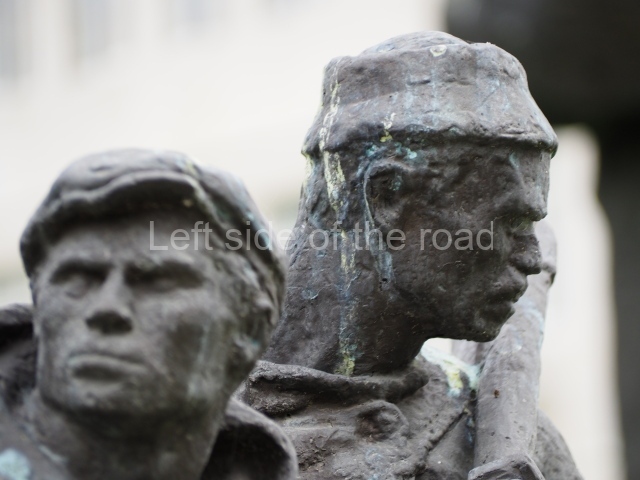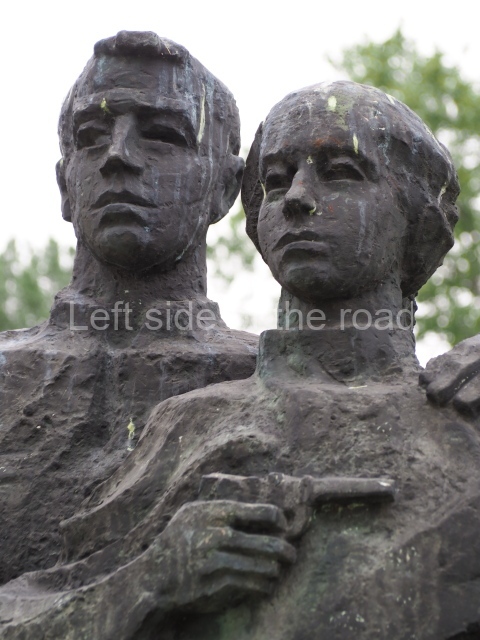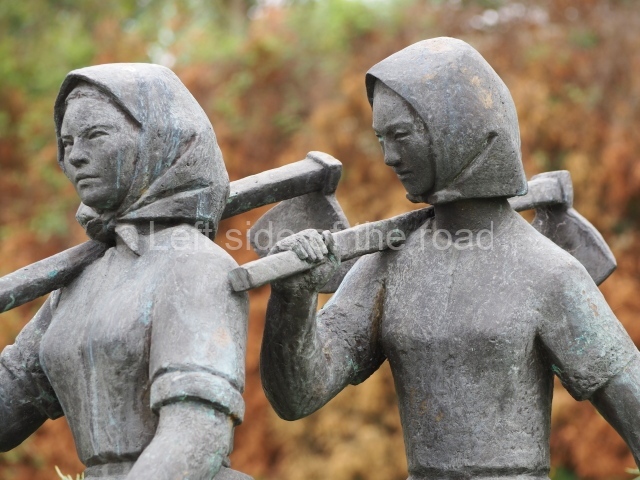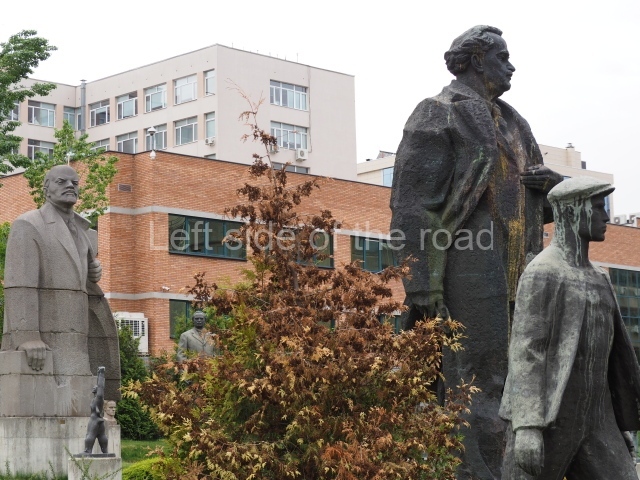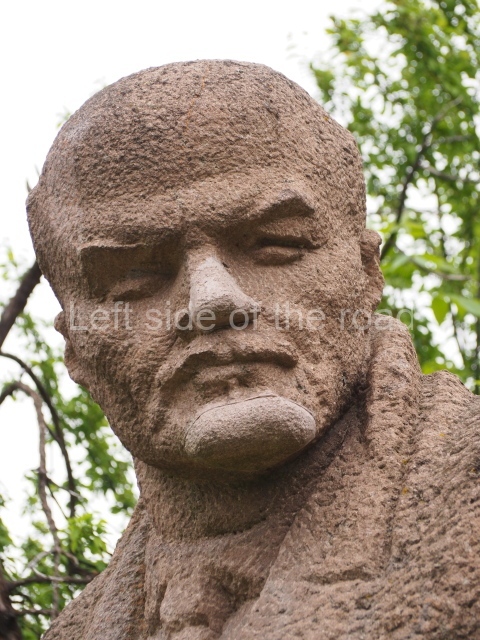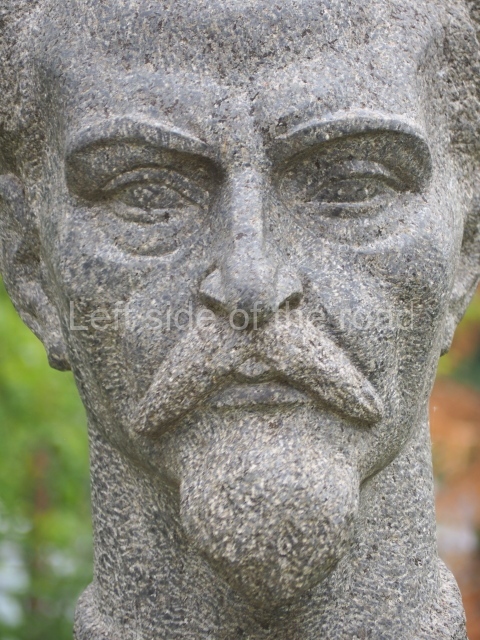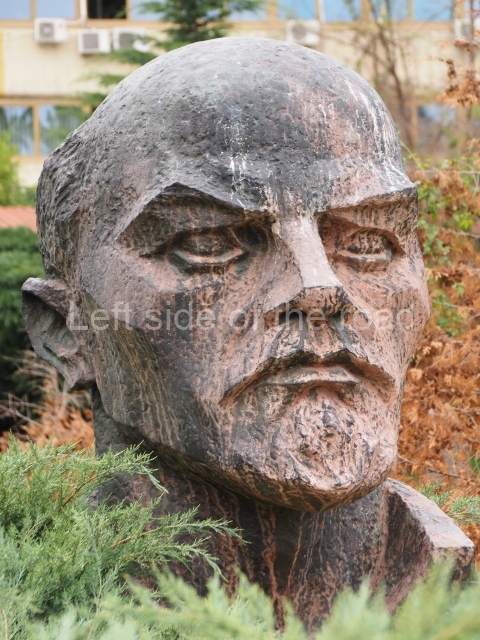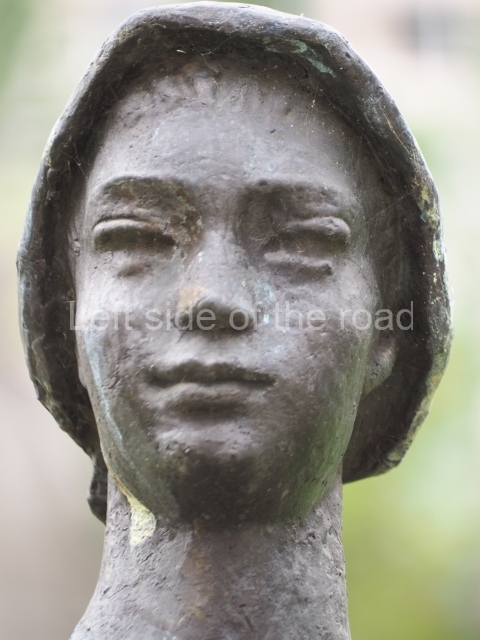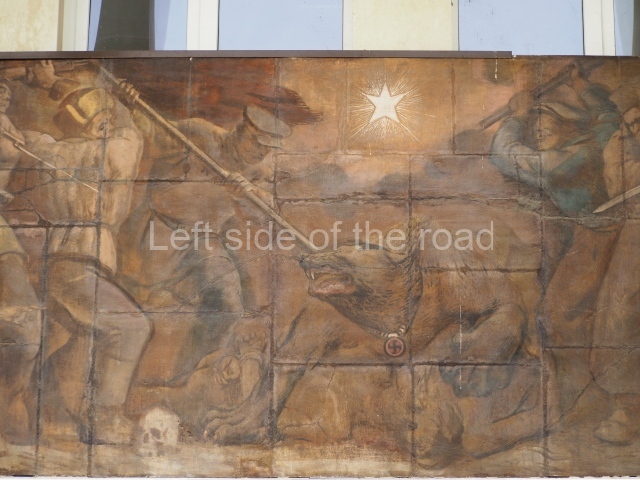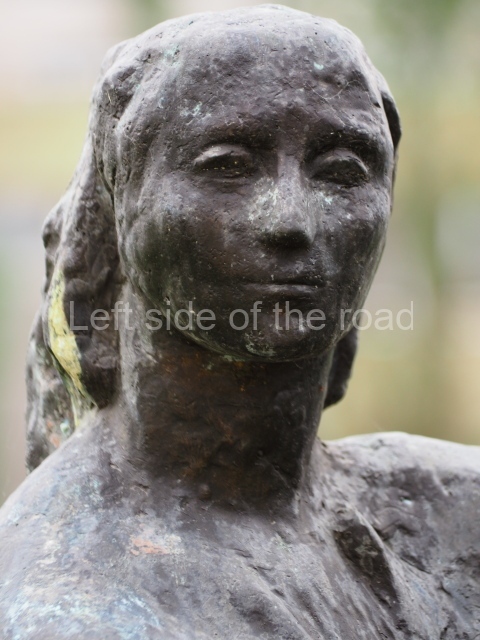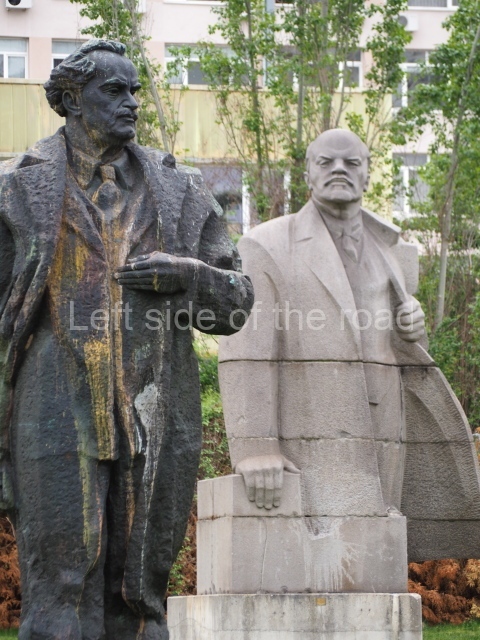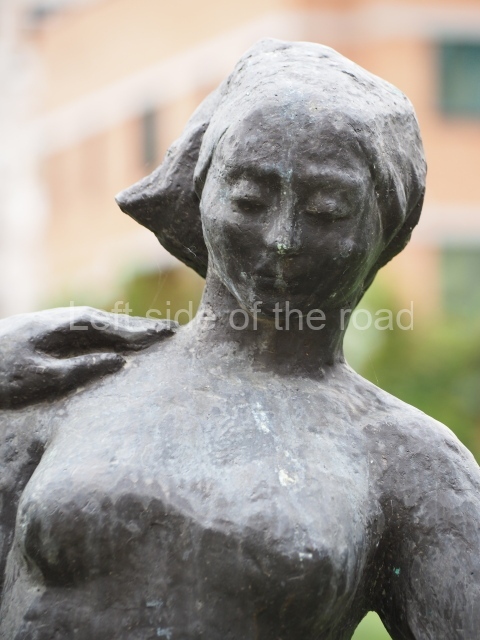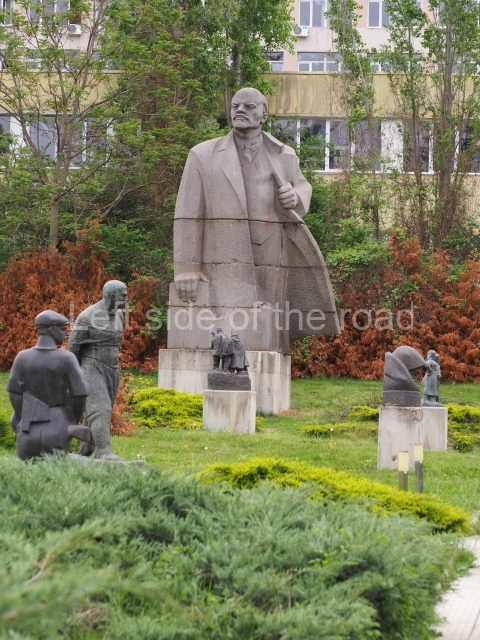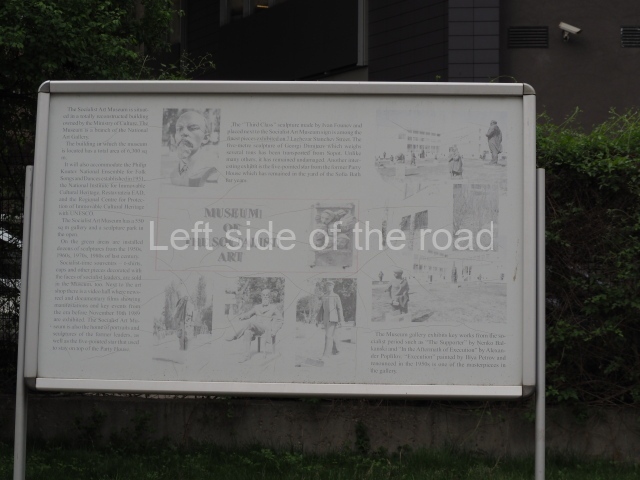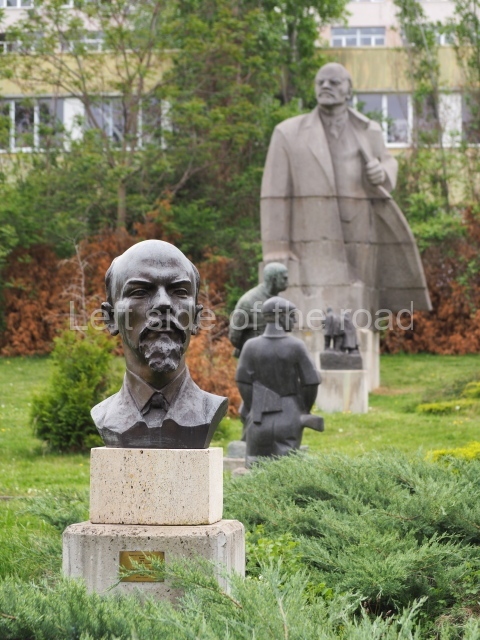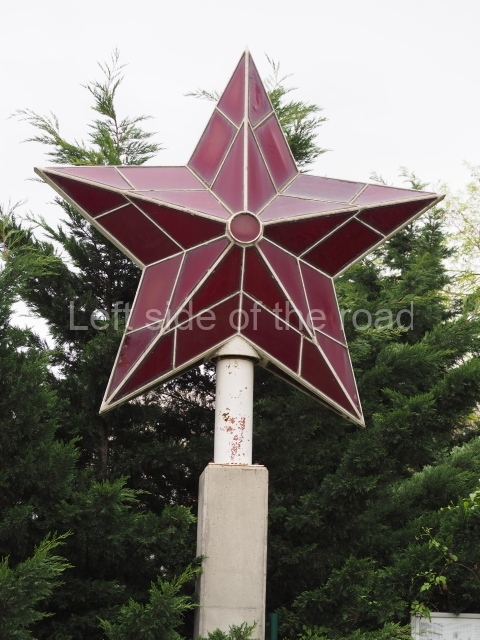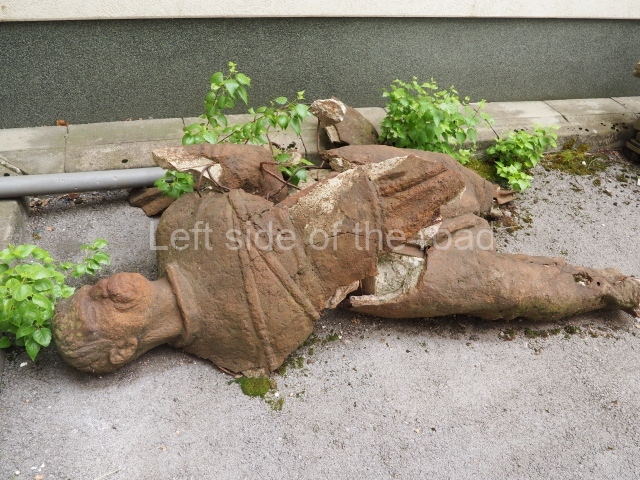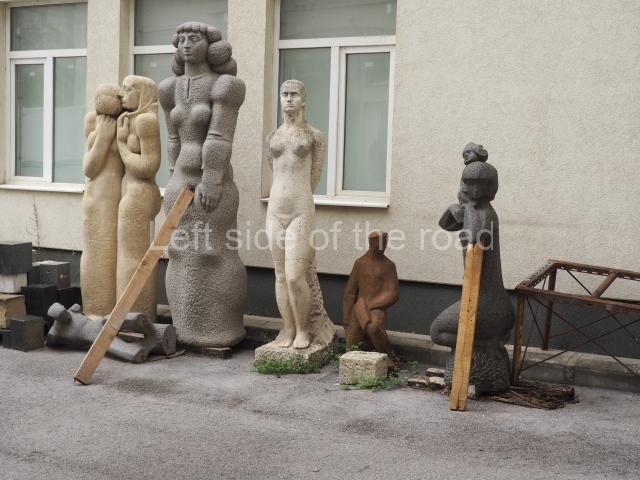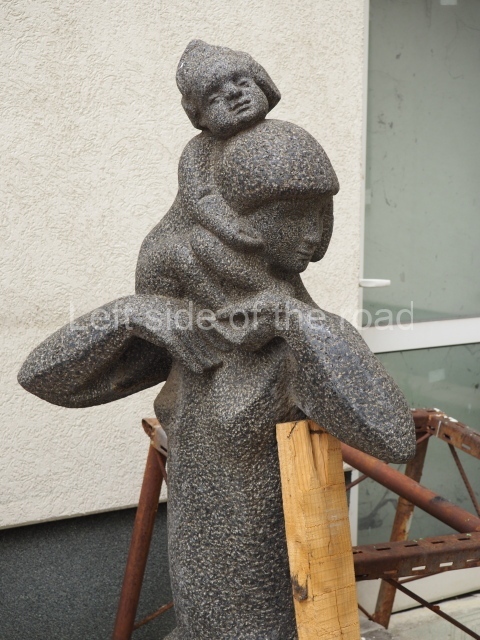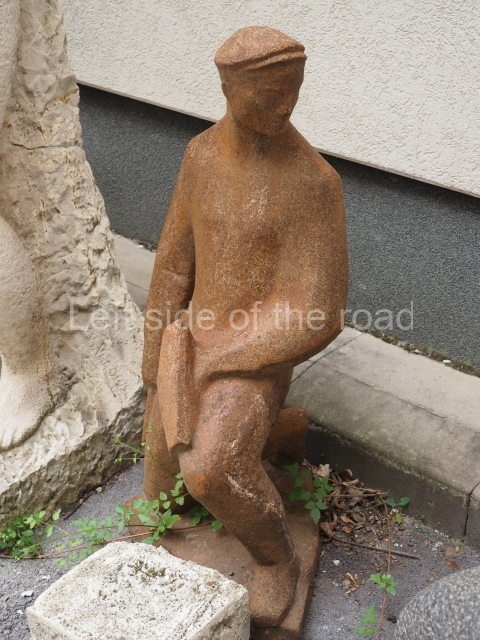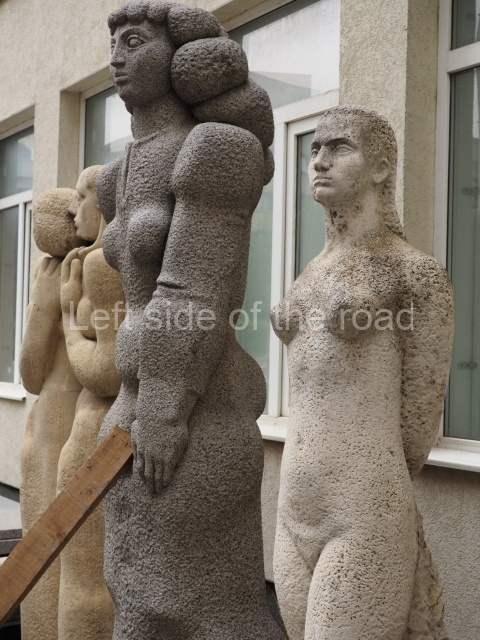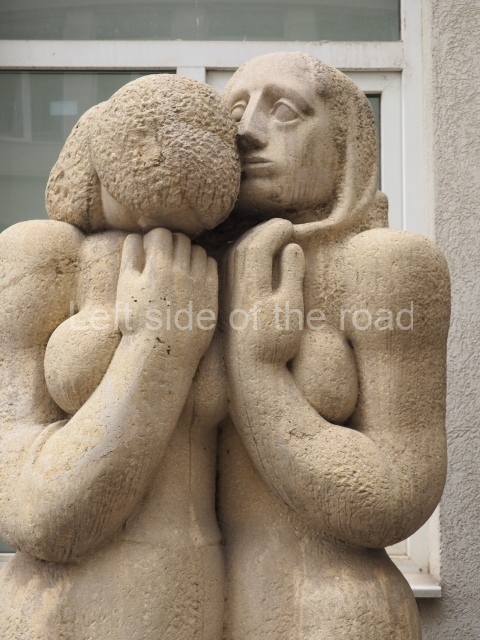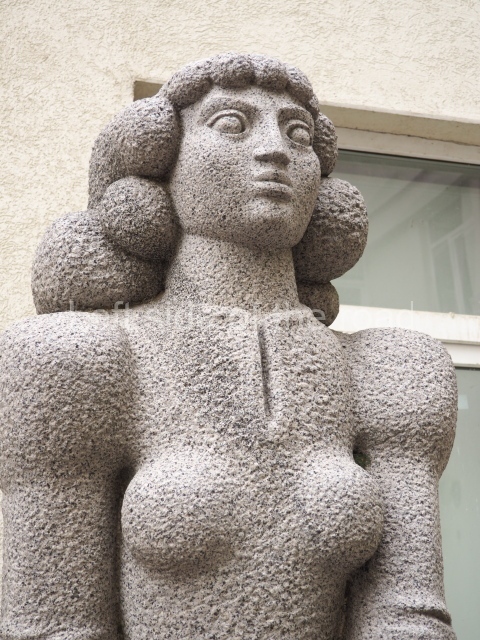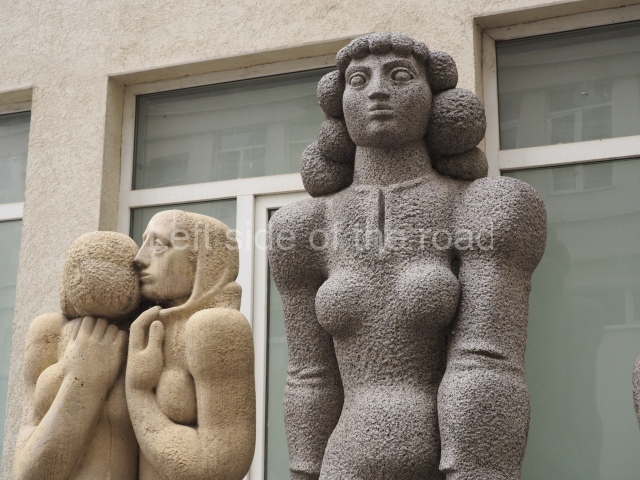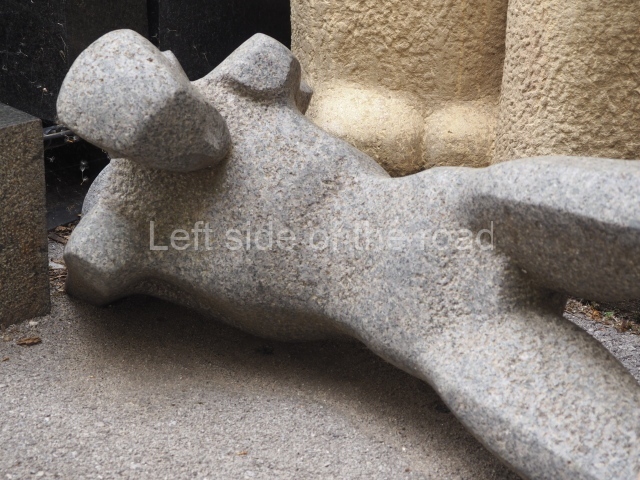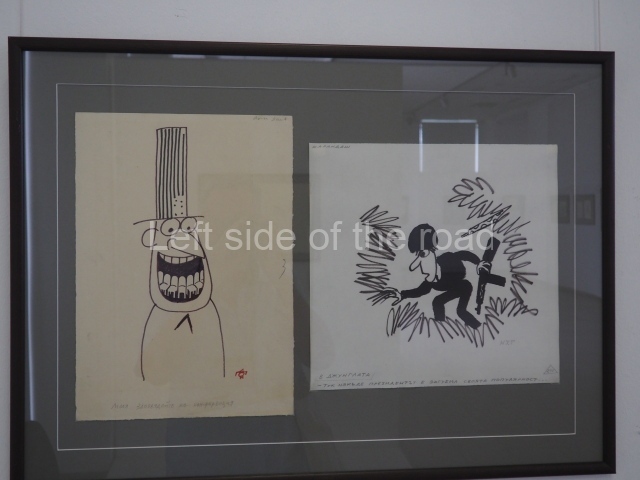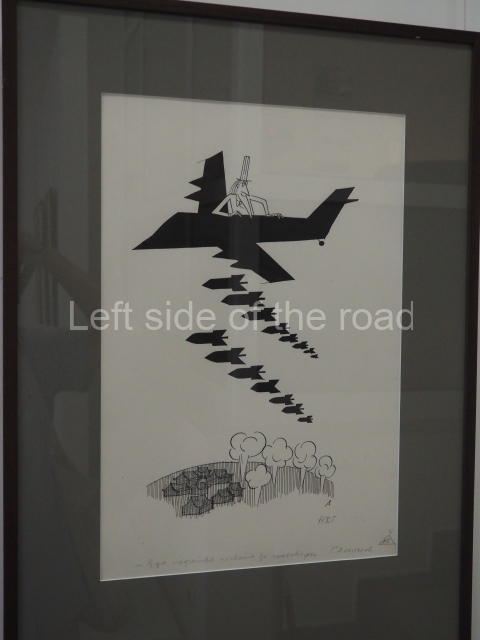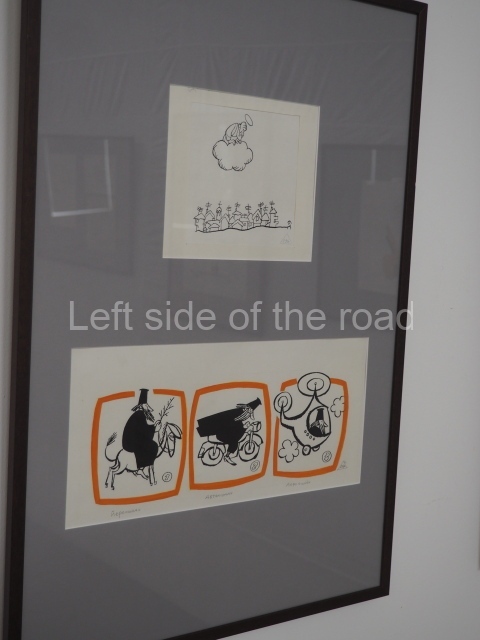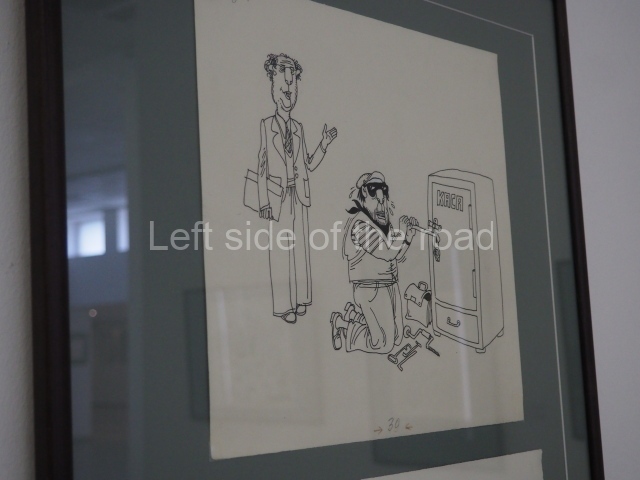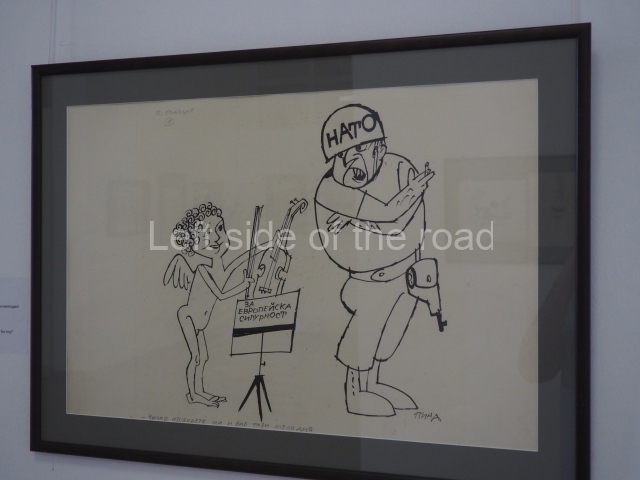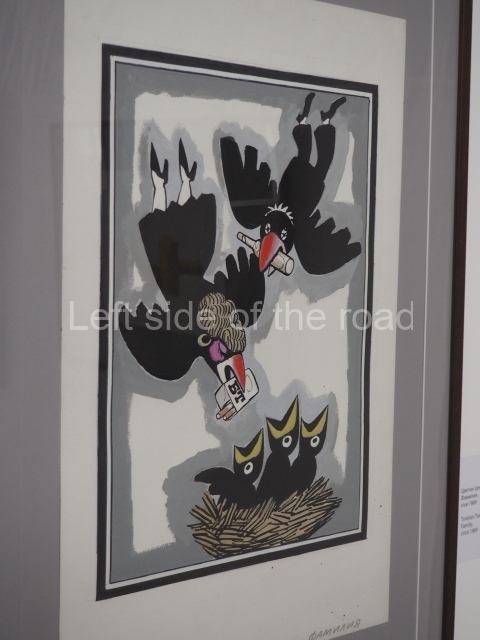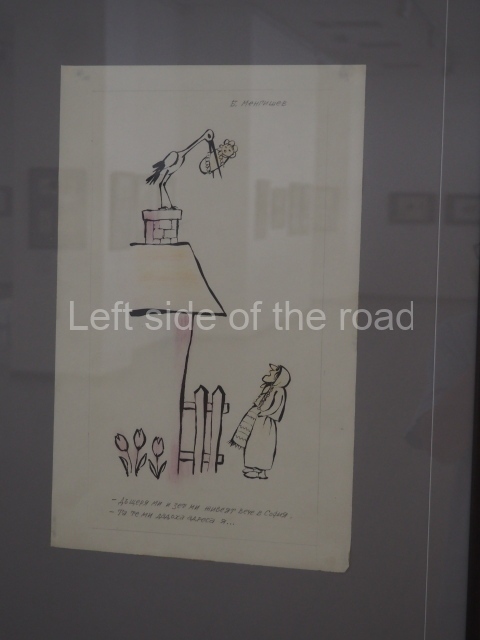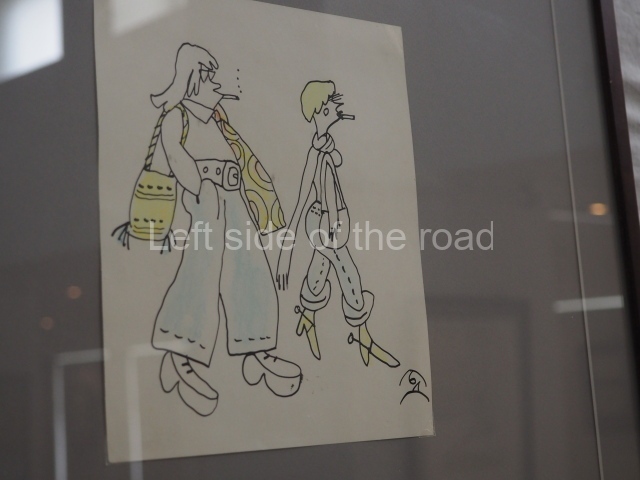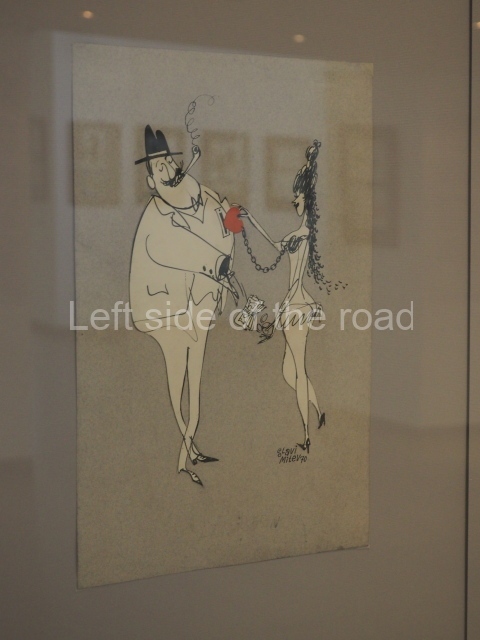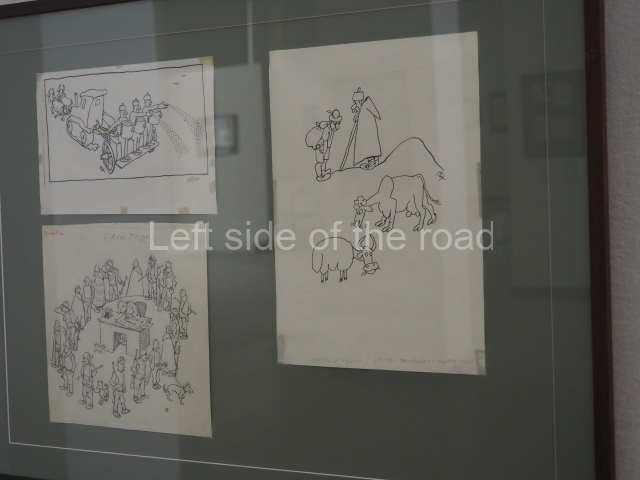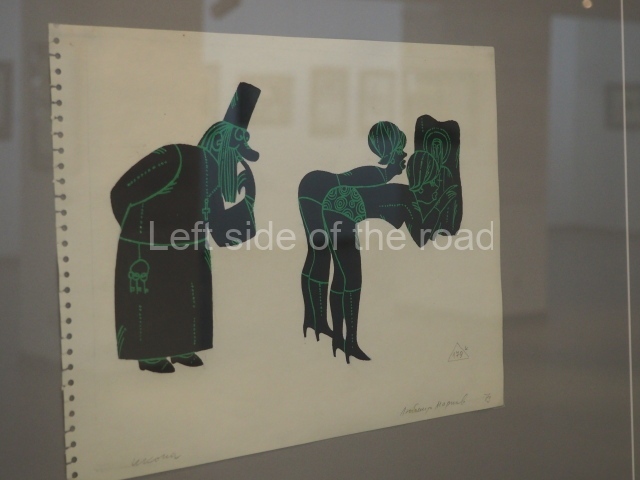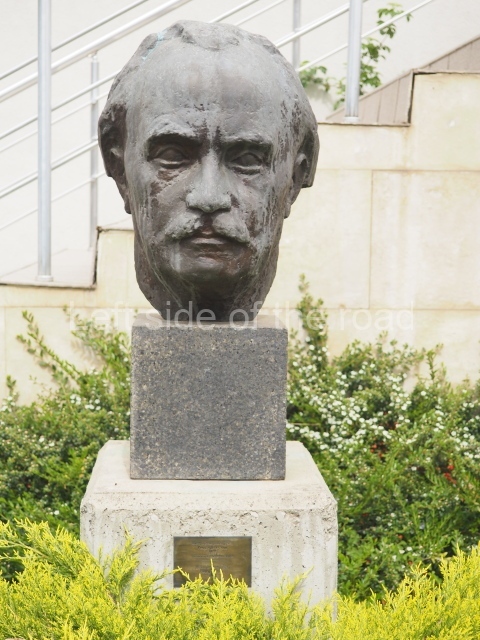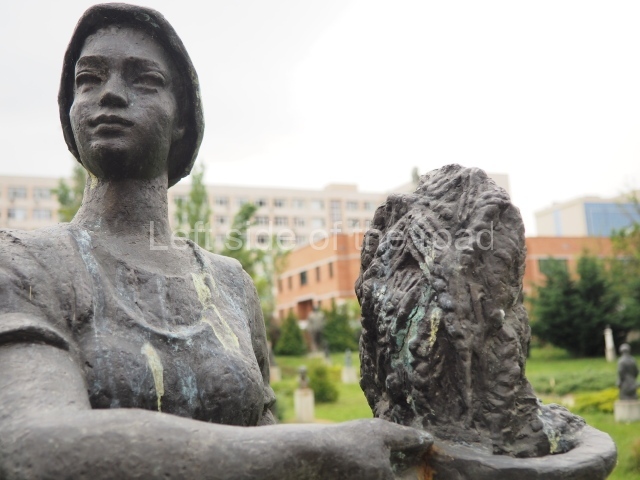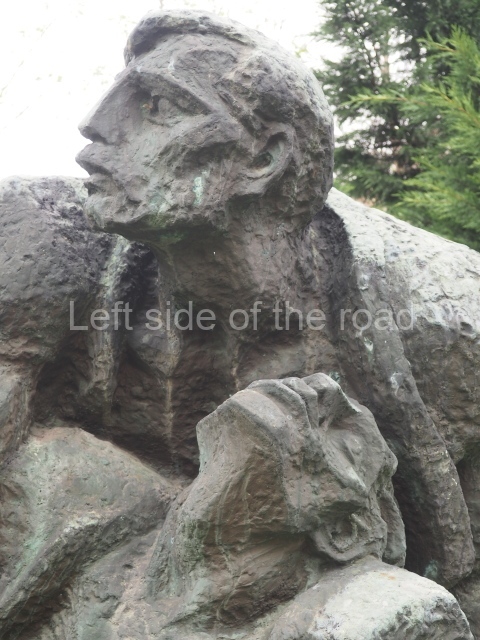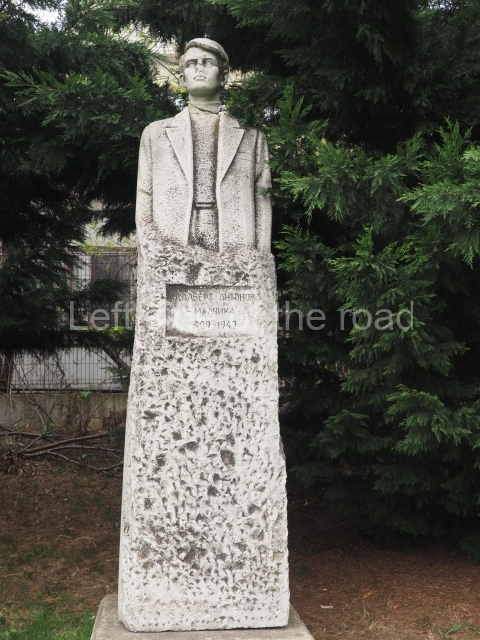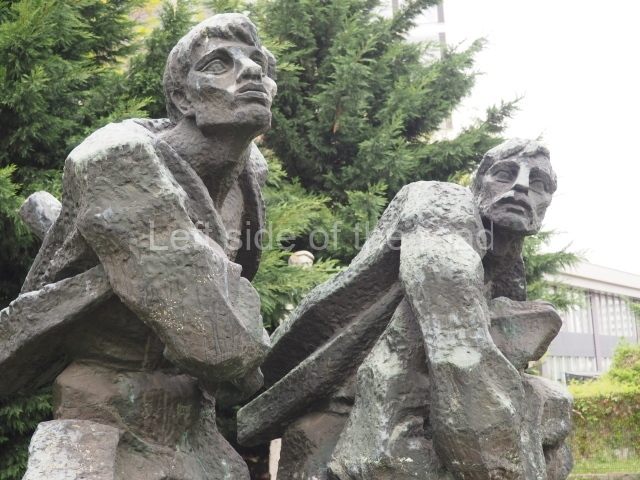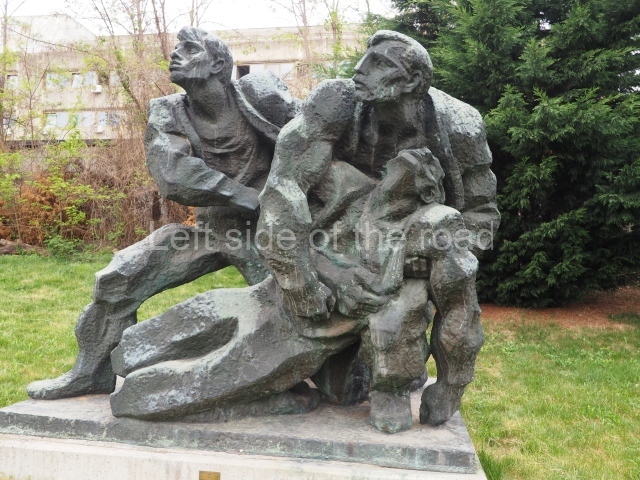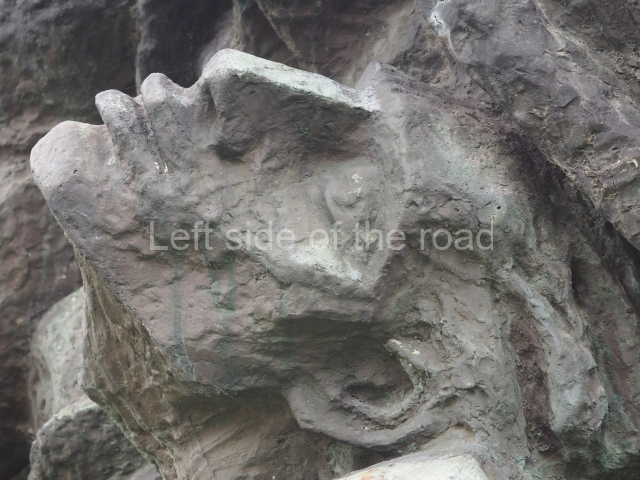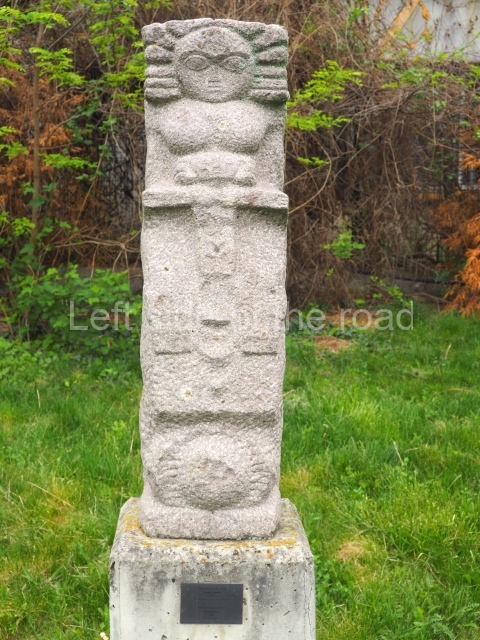Museum of Socialist Art – Sofia, Bulgaria
The Museum is in two parts; the internal gallery and the garden with the collection of statues (almost certainly the most interesting part of the site). The internal gallery has an exhibition that might change. I don’t know how regularly. When I visited in April 2024 there was an exhibition of cartoons, both pro-Socialist and (mostly) anti.
The sculpture garden doesn’t seem to change, There’s probably much more in store than is possible to put on display. And some of the sculptures may not have been designed to deal with outside conditions and will never be put on show if not in the internal gallery.
In the garden you will find;
some fine (and sometimes very large) statues/busts of Comrade VI Lenin. There seems (to my non-expert eye) to be a ‘chunkiness’ – no doubt not an artistic term – to Balkan statues, especially when compared with what would have been produced at the same time in the Soviet Union. As an illustration of that see the two version of JV Stalin in the (now closed, as far as I know) ‘sculpture park’ at the rear of the National Art Gallery in Tirana, Albania;
a number of busts and full length statues of GM Dimitrov. I’ve nothing to compare them to but they also demonstrate that solidity of Balkan sculpture;
a couple of very fine busts of Felix Dzerzhinsky (‘Iron Felix’), the first leader of what started out as the Cheka (and which eventually became the KGB), the organisation Comrade Stalin described as ‘the bared sword of the working class’. For reasons which I admire, but don’t totally understand, Iron Felix was admired throughout the Socialist world, probably due to his steadfast defence of the interests of the working class and peasantry – even though his personal background was that of a minor Polish aristocrat. However, the image of Iron Felix closest to the entrance of the garden is erroneously signed as being VI Lenin. How so called ‘curators’ can allow that error to go unchallenged just goes to show the depths to which education has gone in capitalist Bulgaria;
some quite delicate and beautiful images of female co-operative/collective farm workers;
a number of statues which celebrate/commemorate the struggle of the Partisans against the Nazis in the Great Patriotic War. There’s one that reminds me of a number of groups of Albanian lapidars and another which, with its religious reference to a trinity and the deposition from the cross, with Paskali’s statue in the Martyrs Cemetery in Permet;
a bust of Che Guevara;
a very gentle and moving statue of two Korean children being subjected to the carpet bombing of the ‘United Nations’ (read the US and its lackeys) armed forces during the Victorious Fatherland National Liberation War of the early 1950s. The older boy has his left arm in a sling and he his sheltering his younger sister with his right arm – something that will be happening all the time in Gaza now and which Socialist Bulgaria would have been condemning as opposed to slavishly supporting as a member of NATO;
a couple of group sculptures whose original orientation can present a different idea once that orientation is altered;
a strangely androgynous representation of ‘The Republic’ which has the body of a female but the facial features of a male;
but no ‘Uncle Joe’. Joe and Georgi were like two peas in a pod but after the revisionists took control in the Soviet Union, all the other countries of Eastern Europe (apart from Albania) quickly followed and any statues of JV Stalin would have been taken down in the 1960s. I’m sure they must still exist somewhere. Perhaps one day they will emerge from the darkness;
also (which I almost missed) those statures not considered worth anything, left in a back yard, just left to decay, one even showing how the statues were given their bulk and weight – through its sacrifice of destruction – including a rare ‘classic’ nude female;
and a number of statues that can only have been considered unacceptable due to the sculptor and not the content – unless I missed something.
There’s obviously a lot more Socialist realist artworks still in storage somewhere in Sofia. In recent years the internal art gallery hosted a selection of paintings of the Socialist leaders and also another exhibition of those Socialist Realist paintings that celebrated the working class and peasantry. There were a couple of catalogues of these exhibitions available in the book stall of the National Art Gallery.
The principal aspect of the Monument to the Soviet Army, which used to stand on the top of the pedestal and which was removed in December 2023, is supposed to be coming to this gallery at some time in the future. Whether the delay is political or if the statue is undergoing restoration and cleaning I don’t know. This consists of a trio, a Red army solder, a Bulgarian woman holding her baby, and a Bulgarian man. However, I see at least three problems with this installation in the museum garden.
The first is that something that was designed to be seen from more than 30 metres below will look very strange at ground level. Secondly, I can see very serious problems on getting such a structure physically through the entrance to the museum garden. Even if it is in three parts it will be a major logistical task to lower the statue into position. Thirdly, where would it go? There’s not a lot of space available.
How to get there:
Get to GM Dimitrov Metro station on the lines 1 and 4. After leaving the station and getting to street level follow the ‘tunnel’ of the Metro heading to the city centre. On the opposite side of the road is the office of Fibank. At the first road junction (still within sight of the Metro station) turn right. Within a few metres there’s a modern shopping/cafe complex on the right and immediately after this you’ll see an entrance controlled by a barrier. Go through this into a car park and you’ll notice a large red star amongst the shrubbery to your right. The entrance to the museum statue park is to the left of the star. The ticket office is in the small souvenir shop on the left.
Location:
g.k. Iztok, ulitsa Lachezar Stanchev 7, 1756 Sofia, Bulgaria
GPS:
42.666°N
23.3577°E
Entrance:
Bulgarian Lev 6
Opening times:
10.00 – 18.00, Tuesday-Sunday, closed Monday





